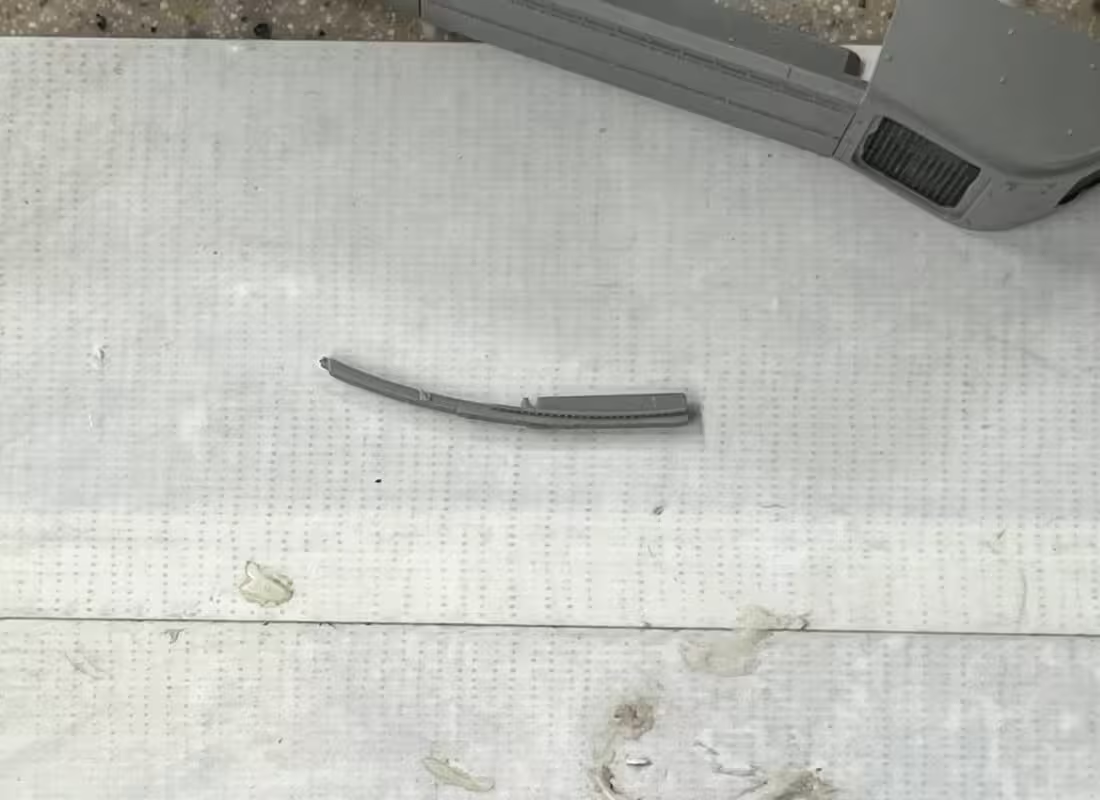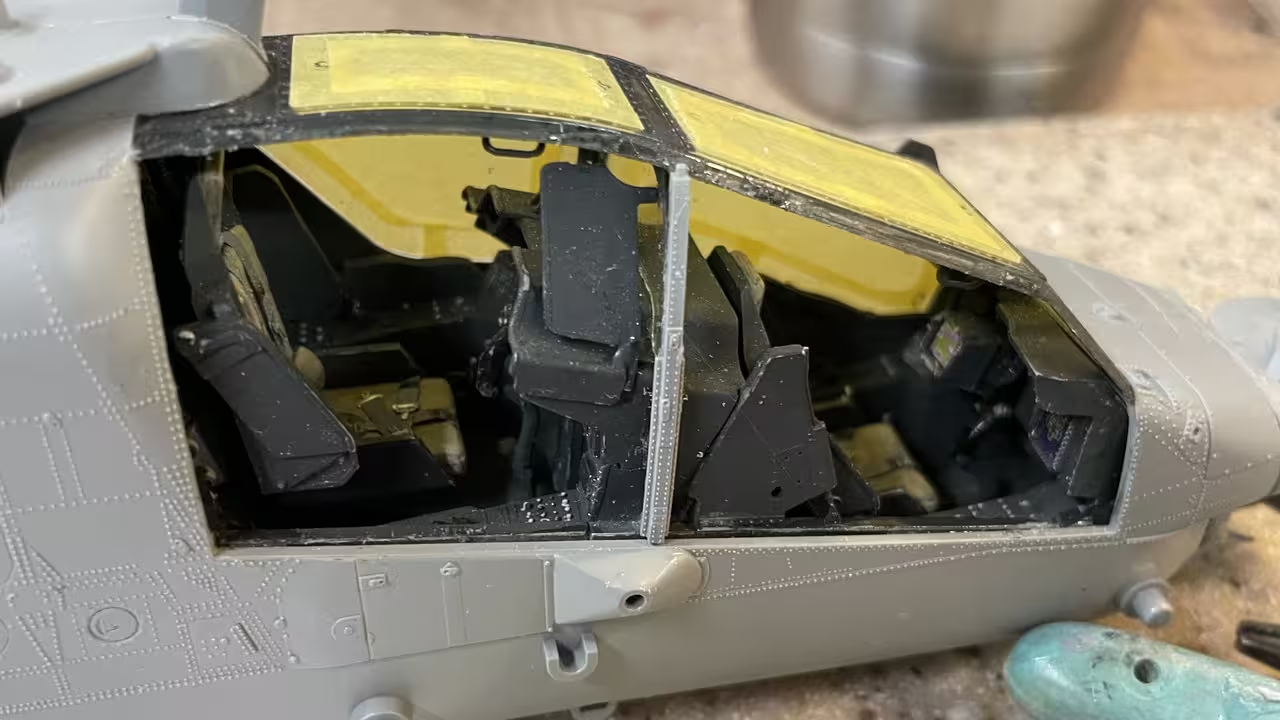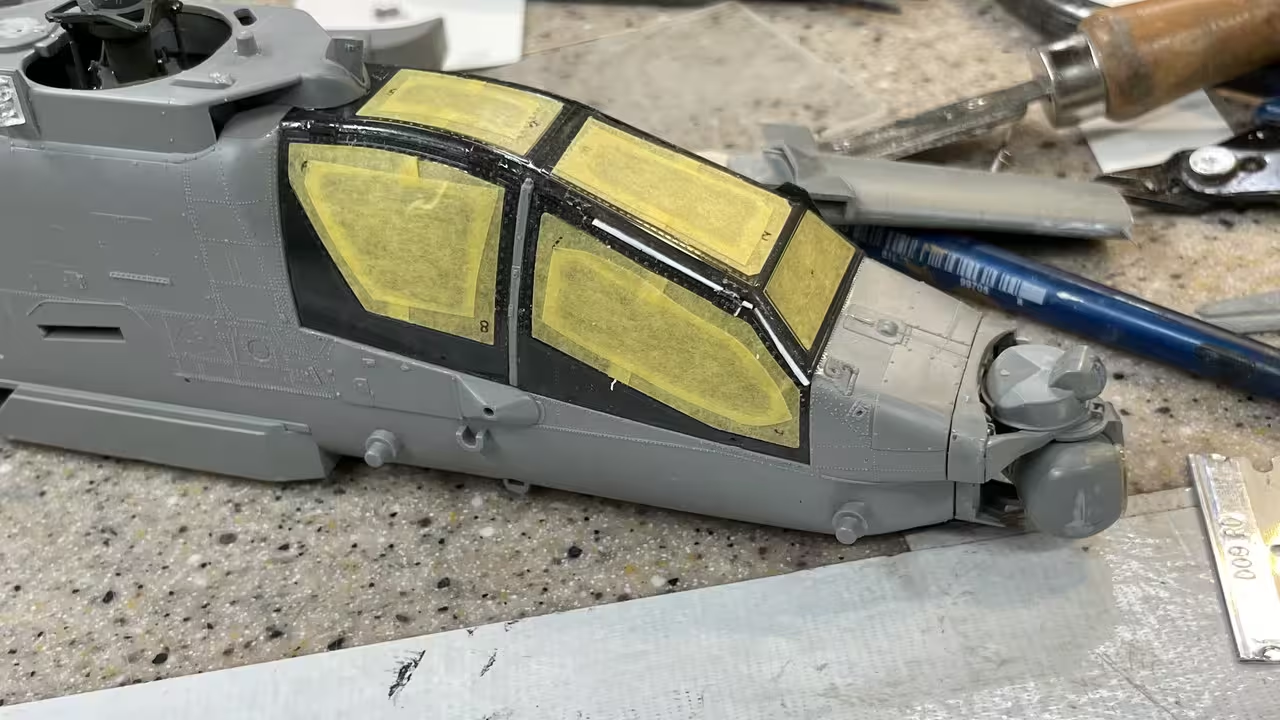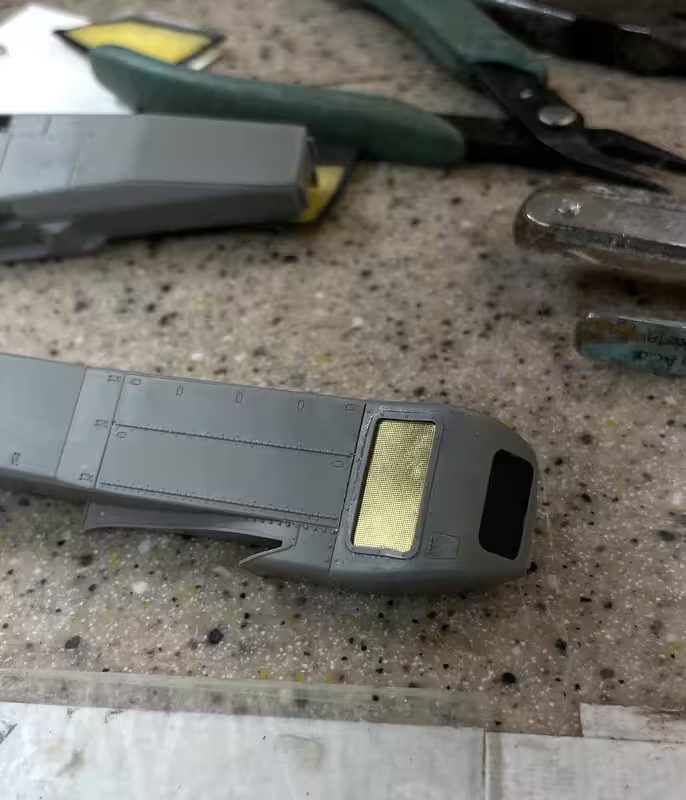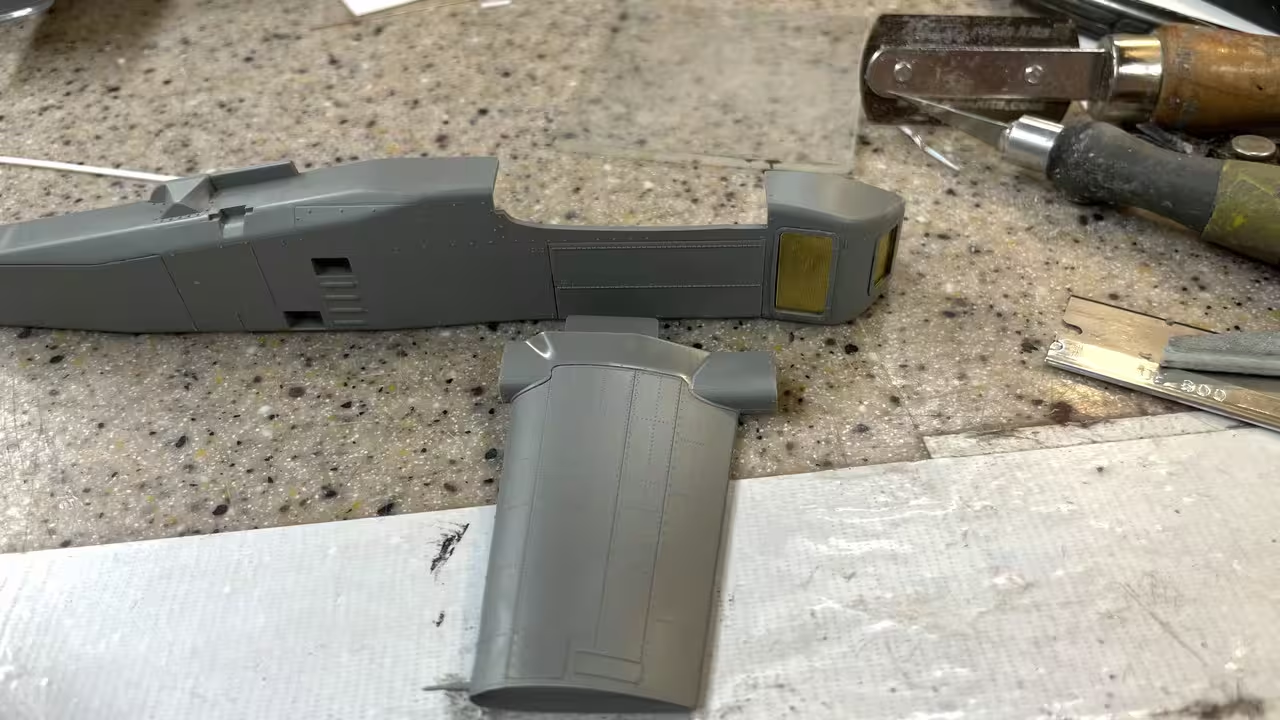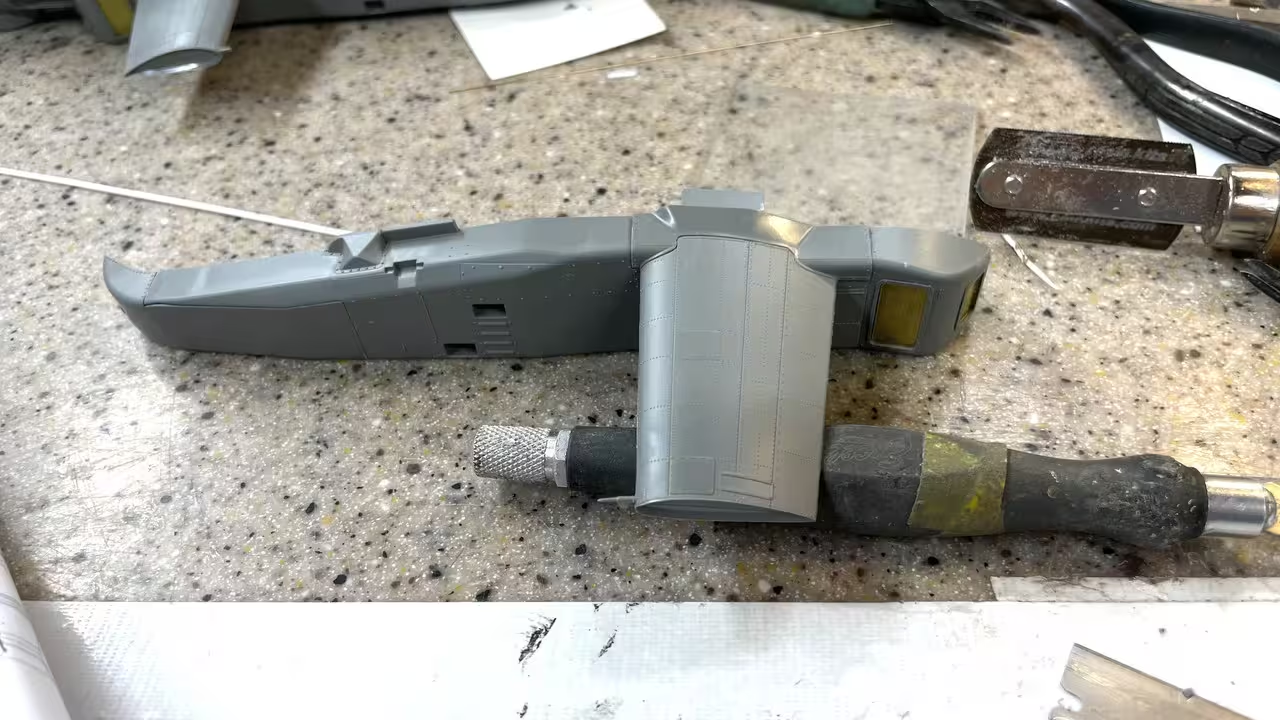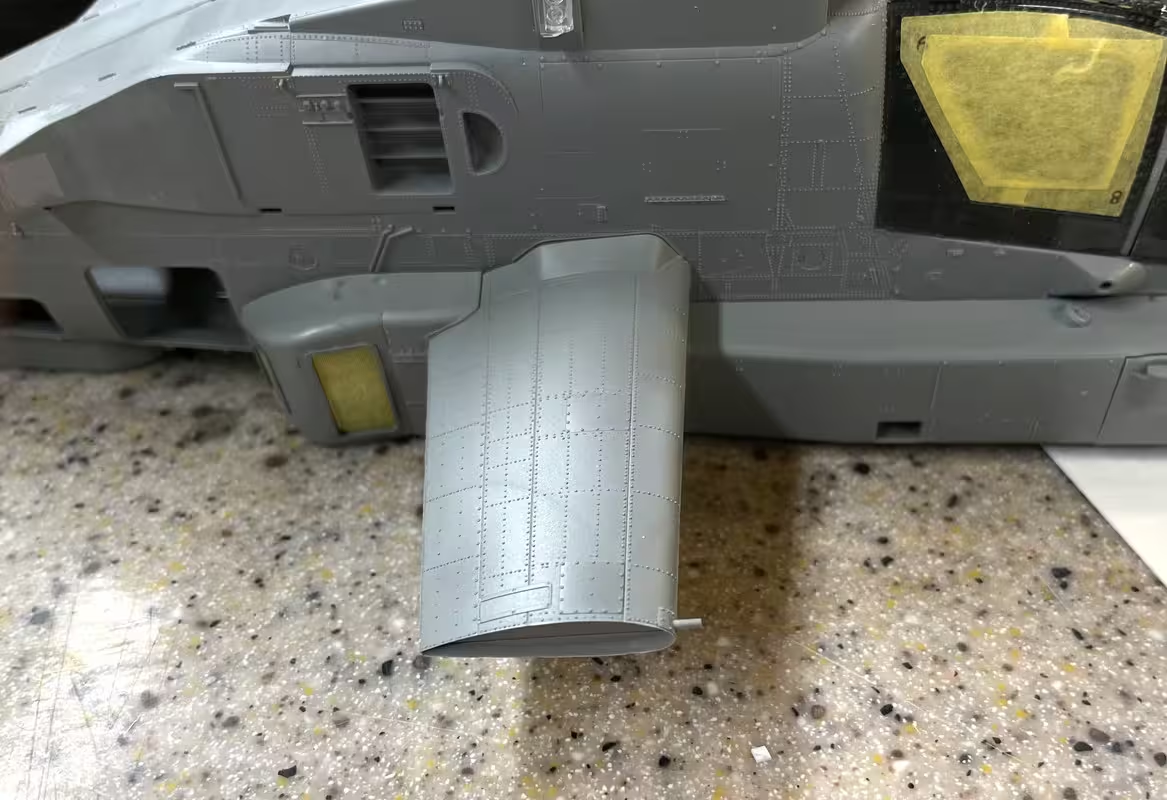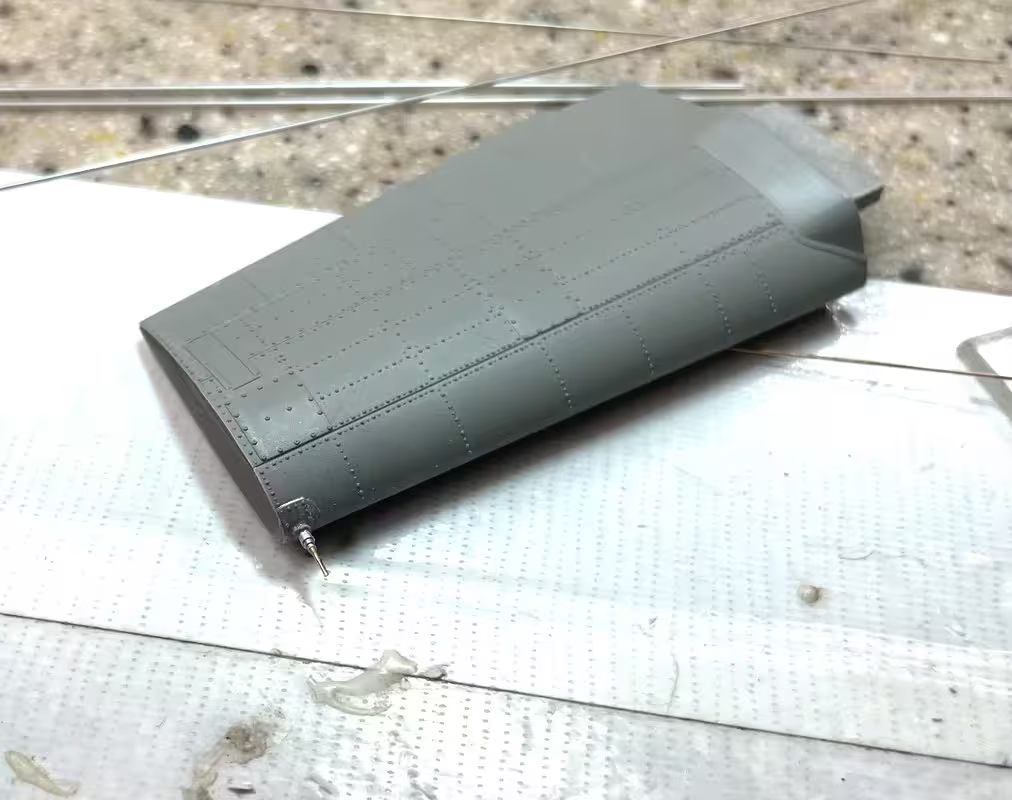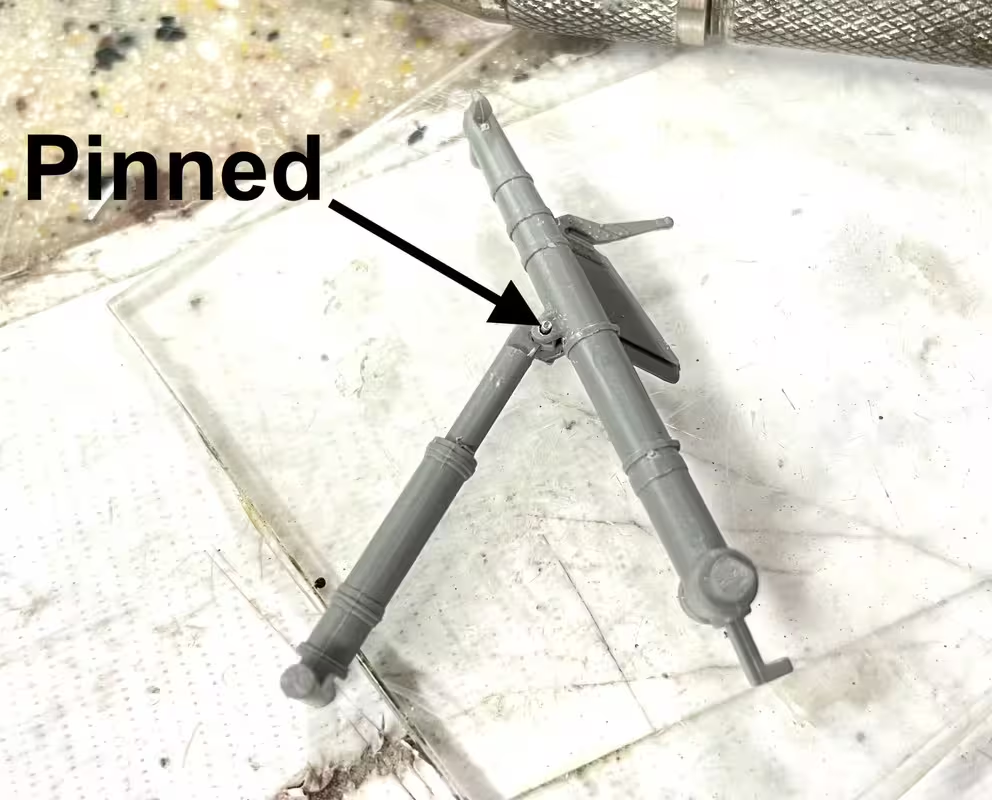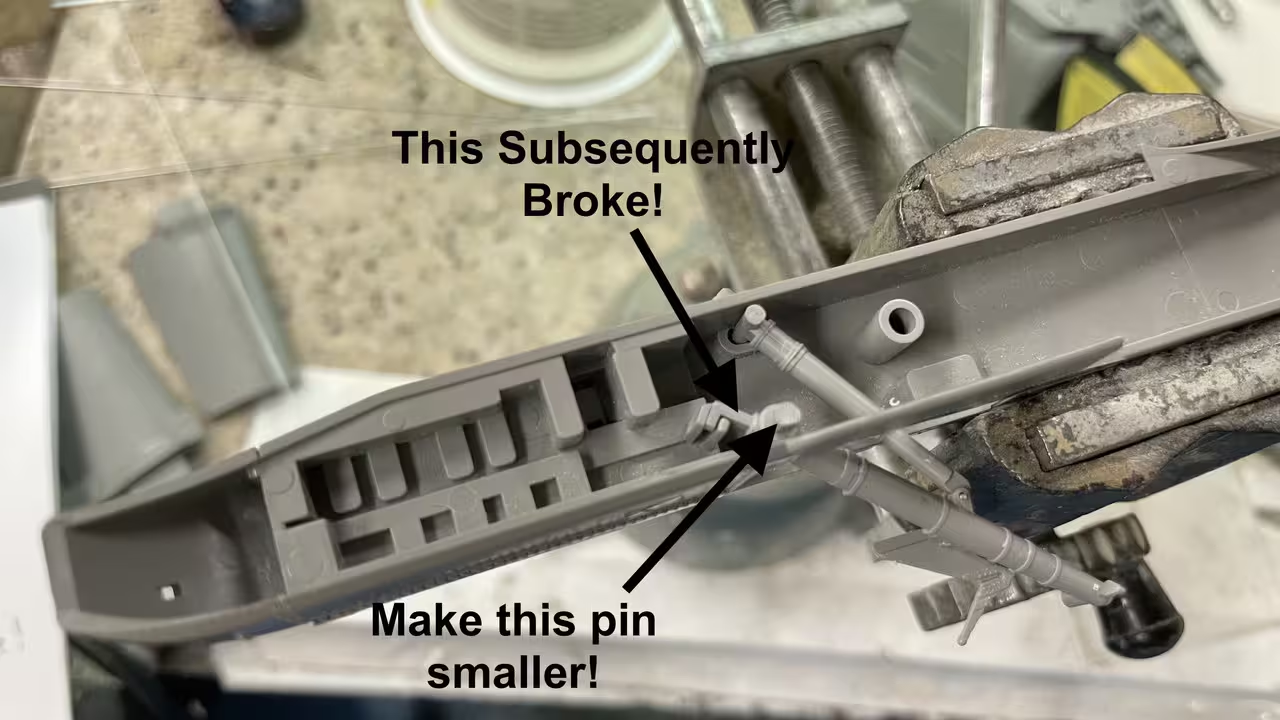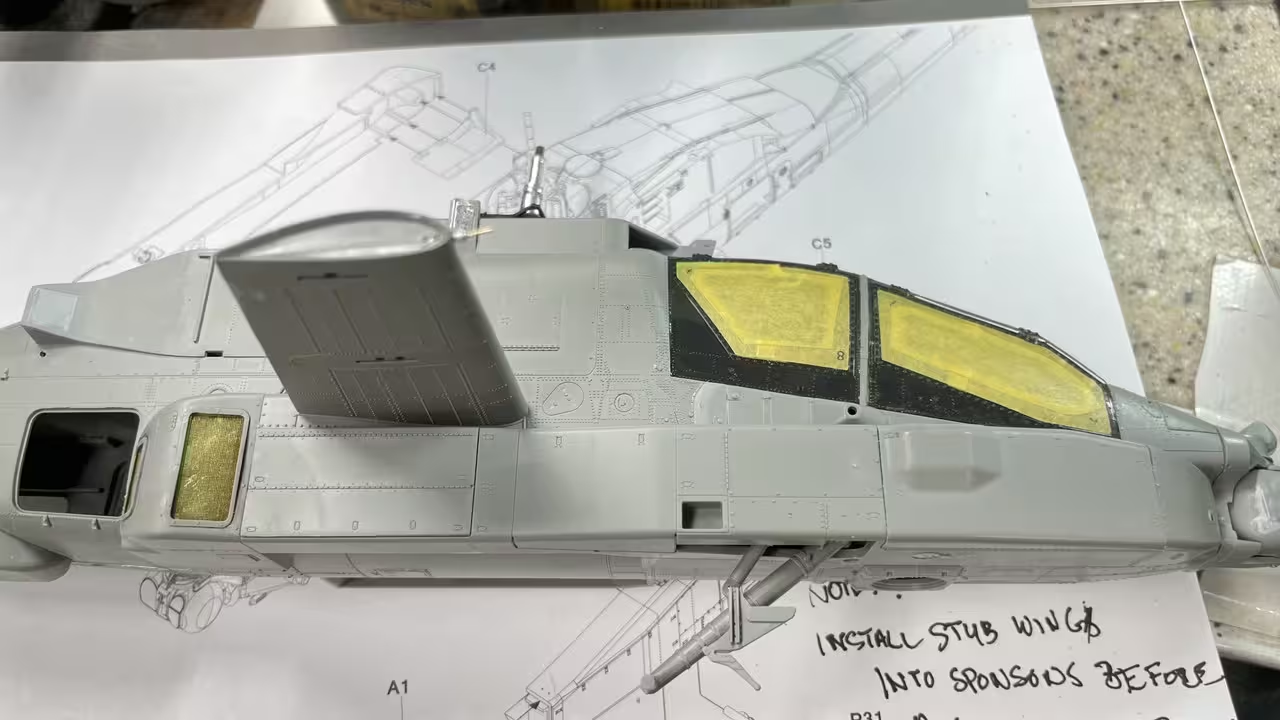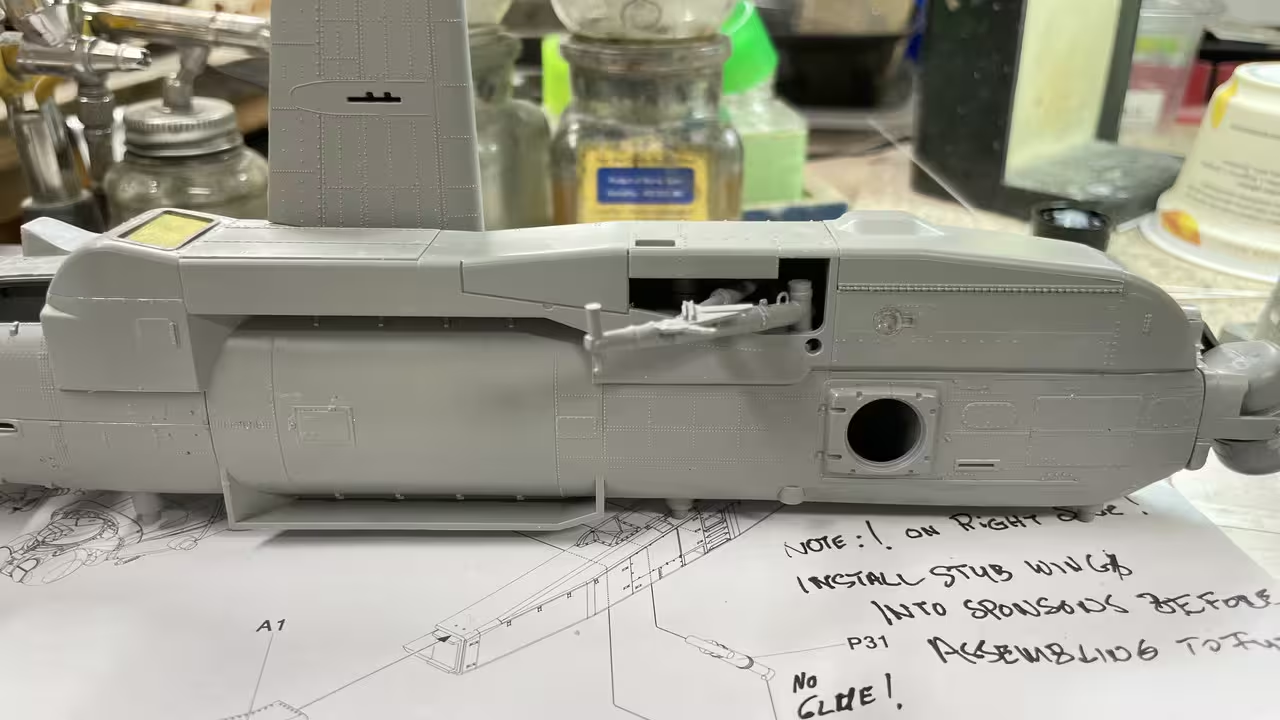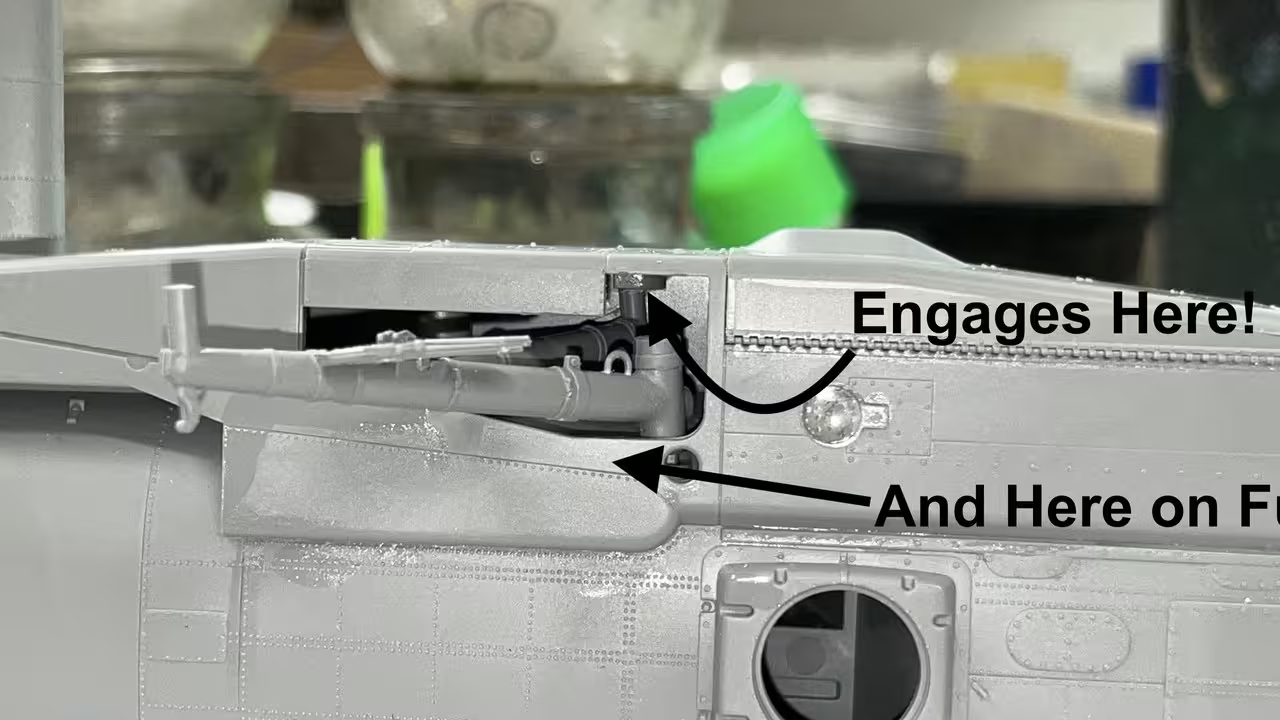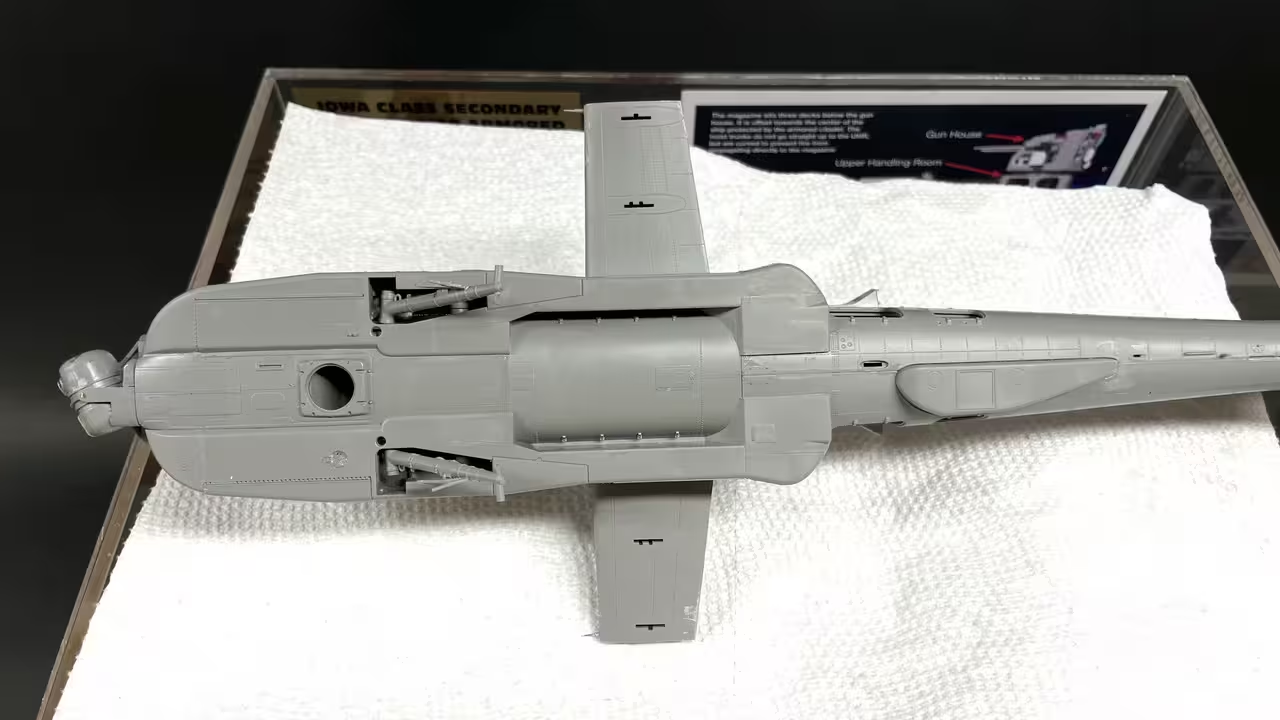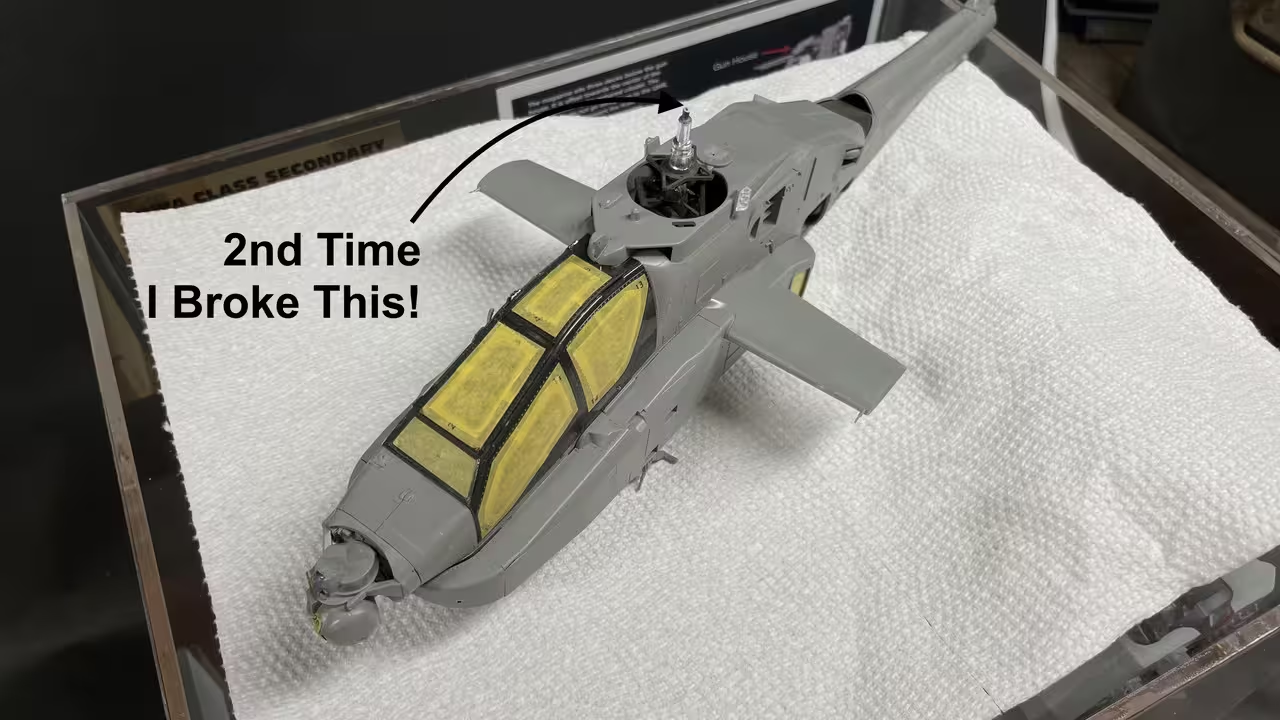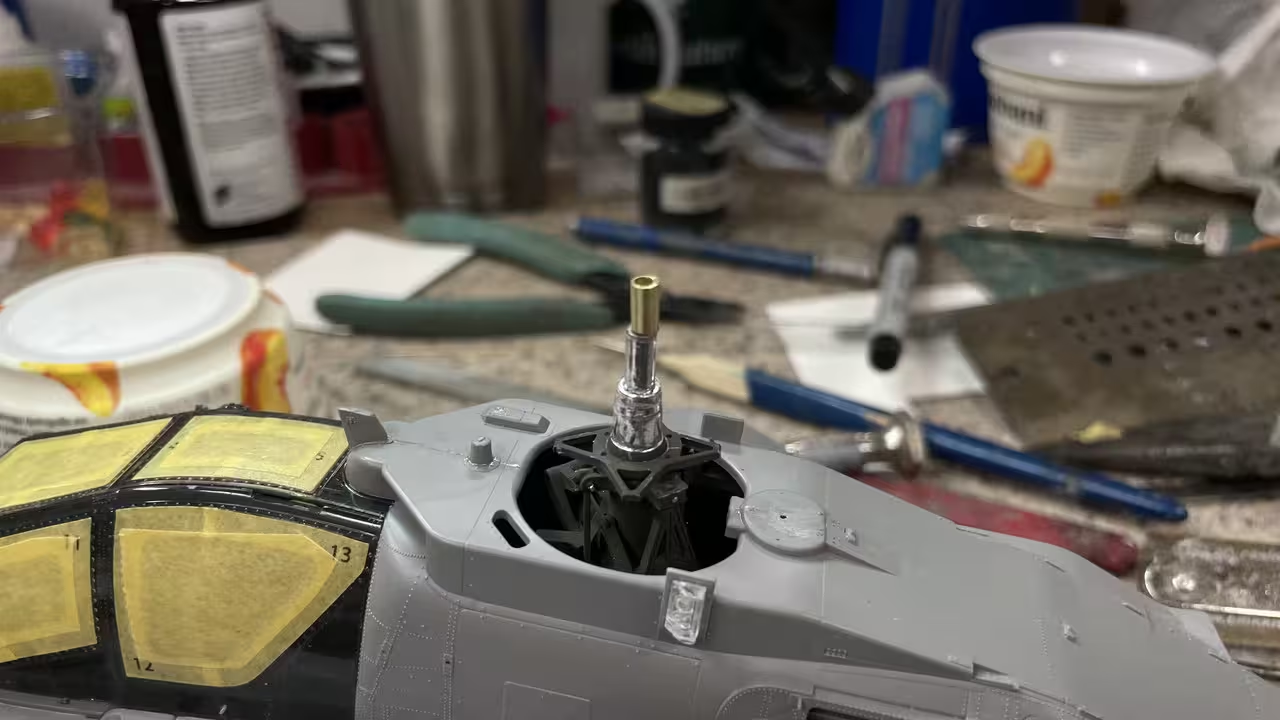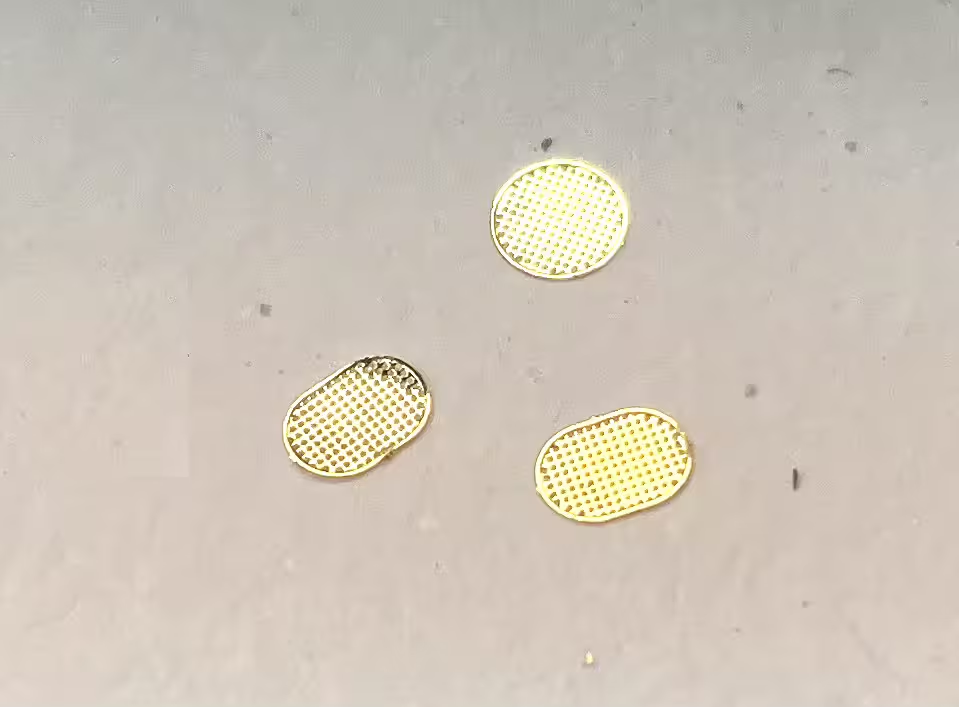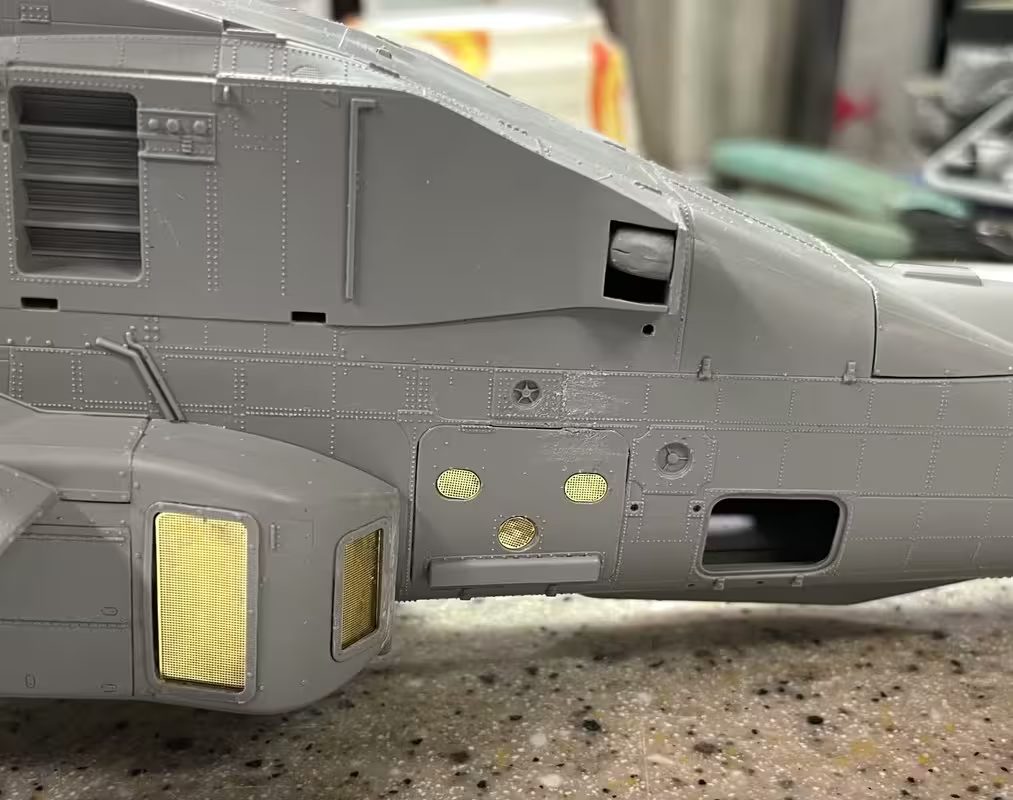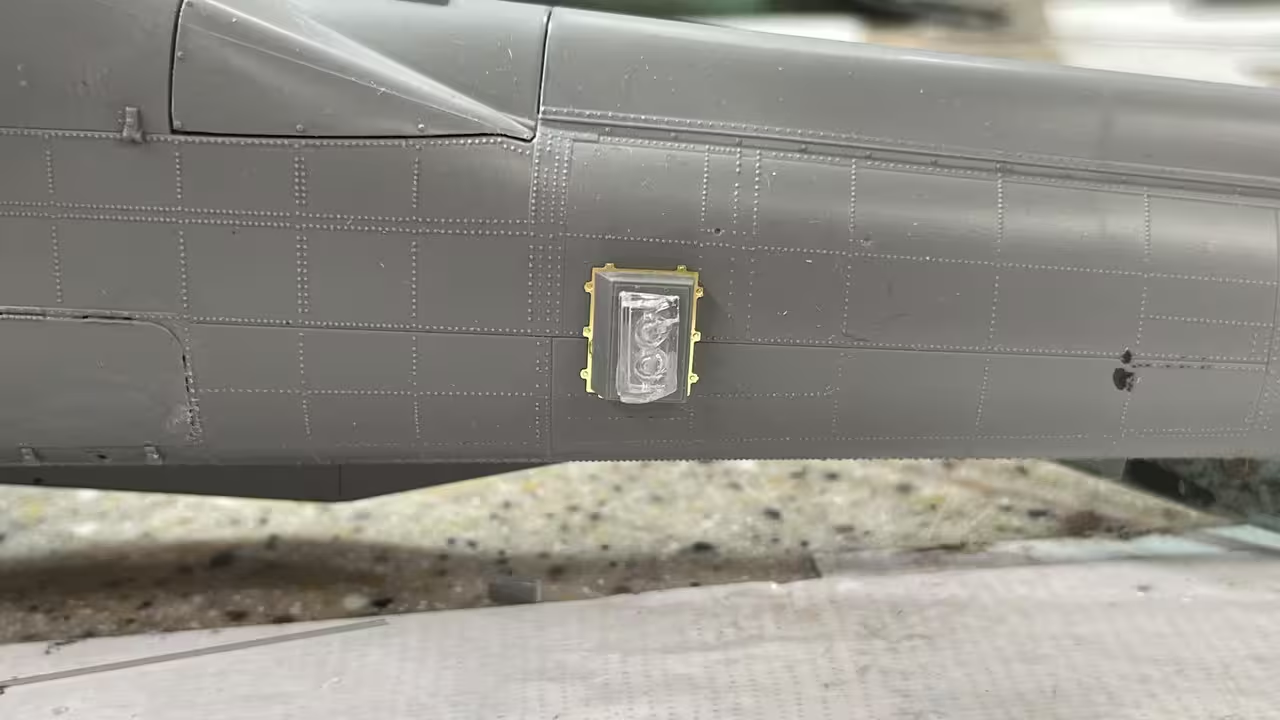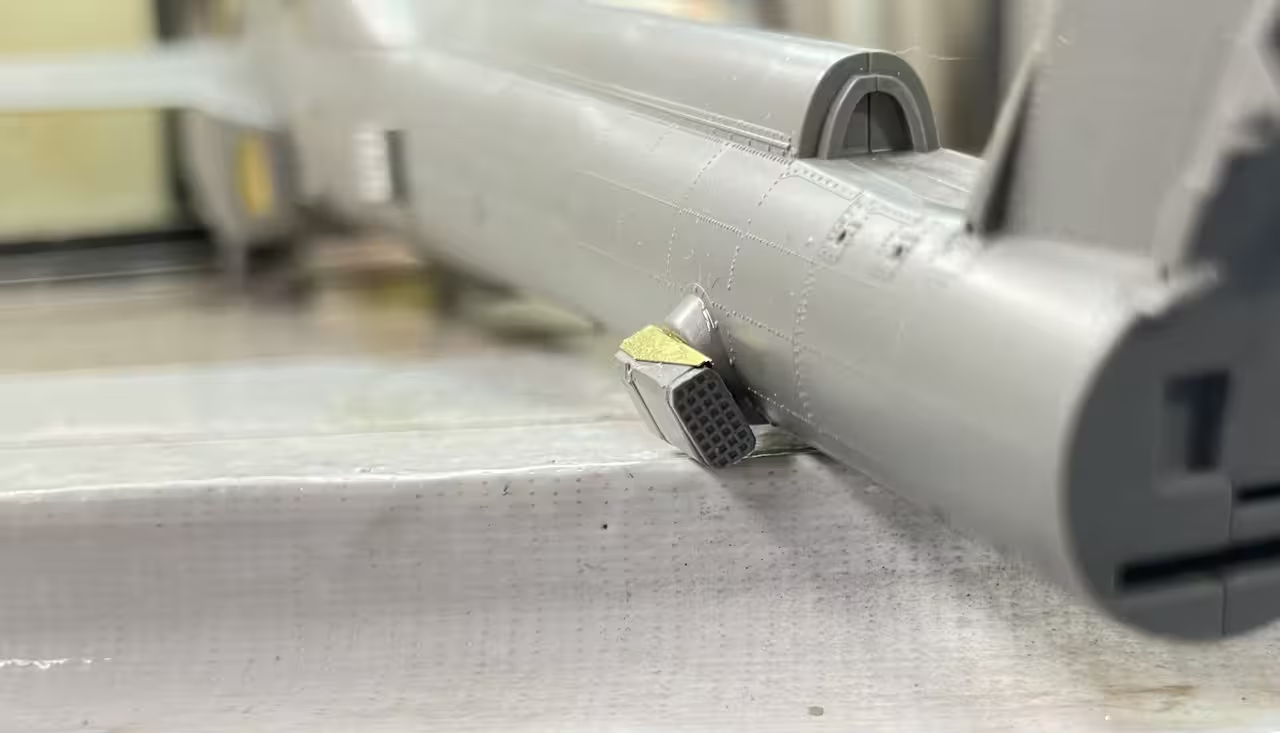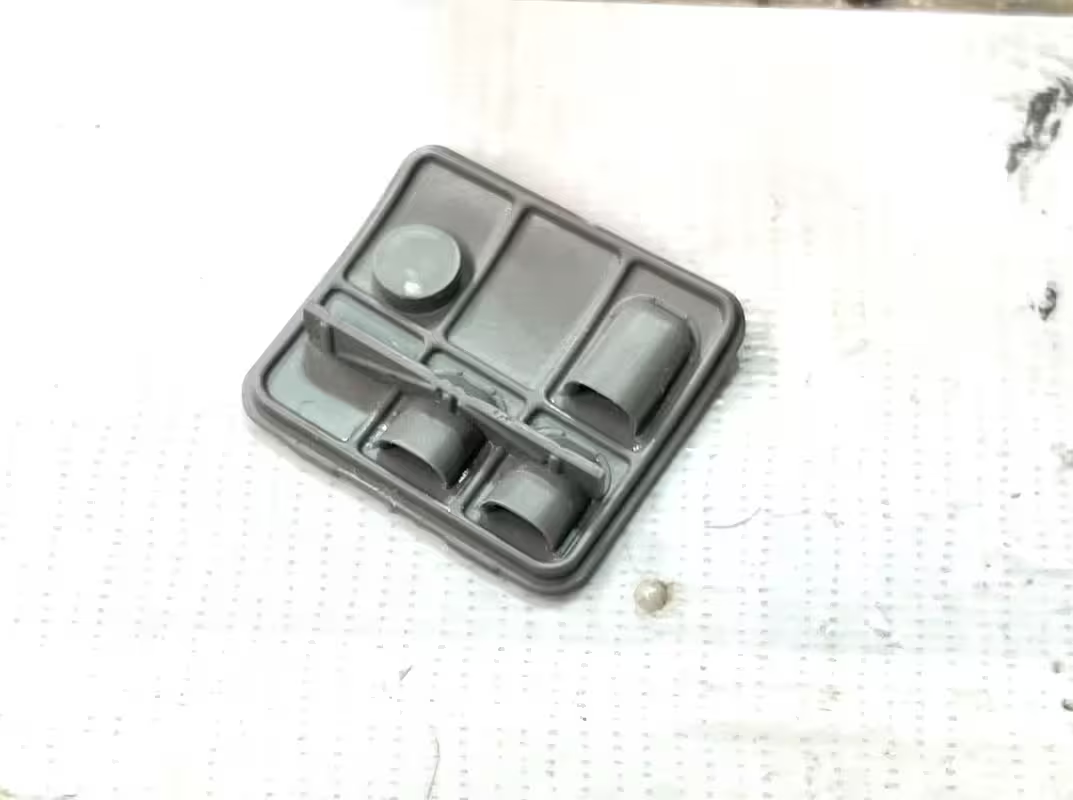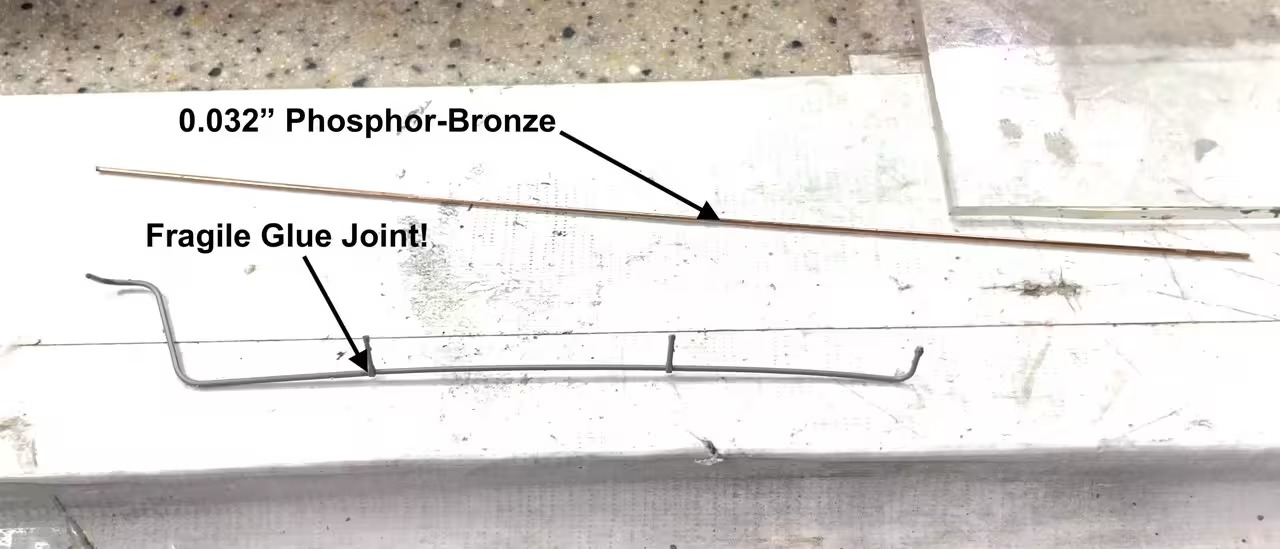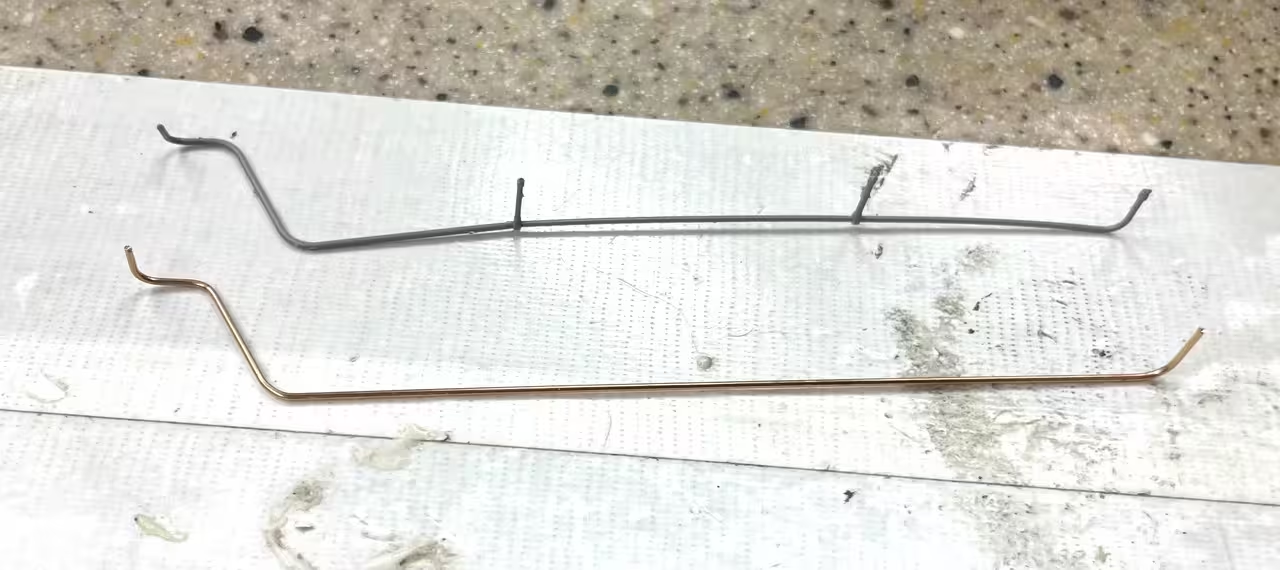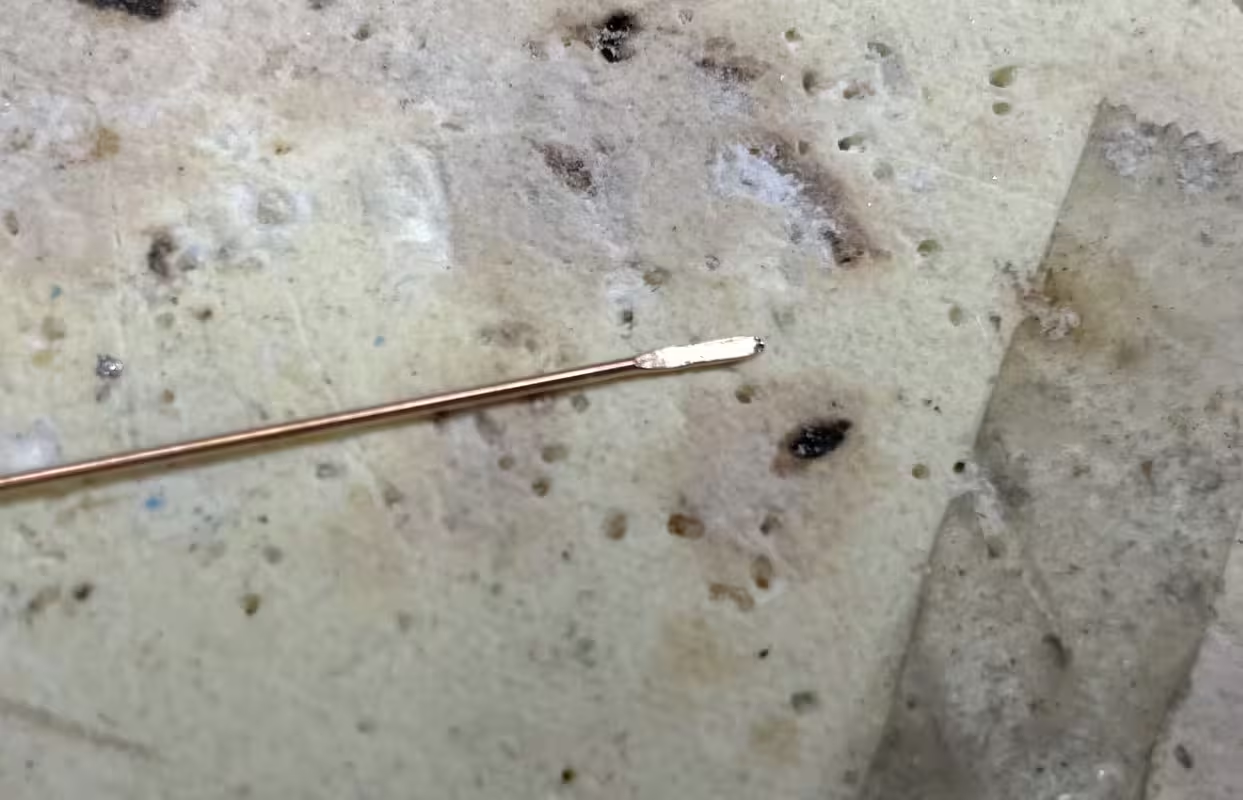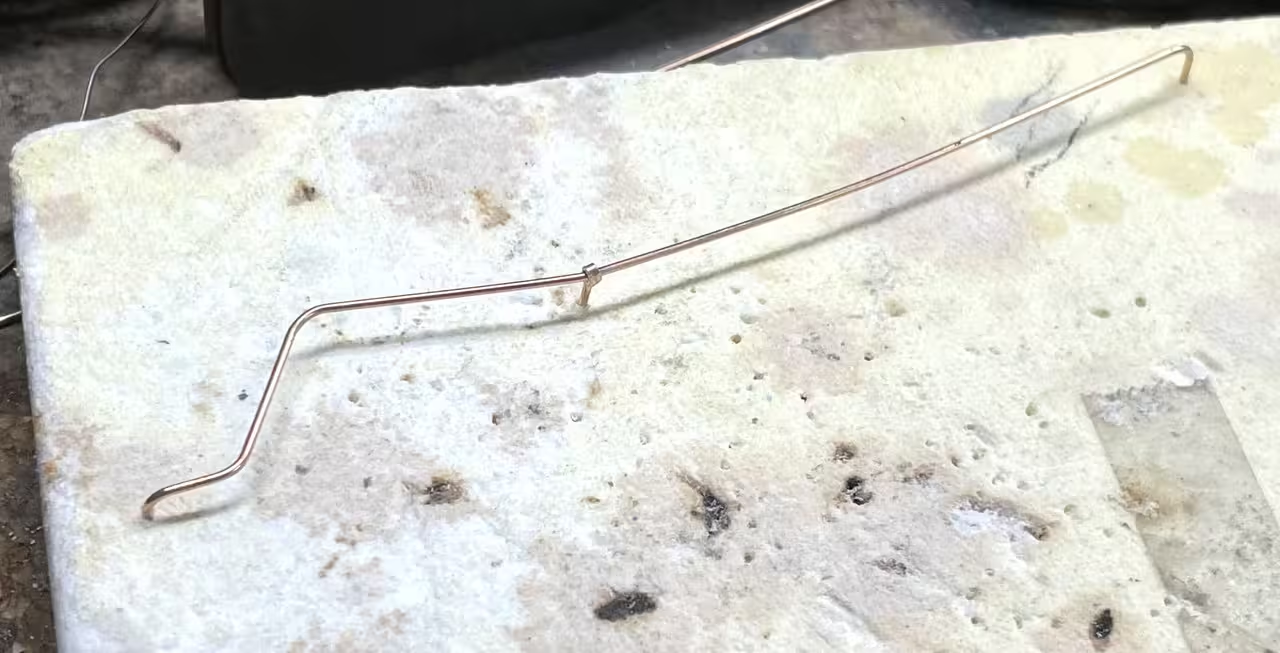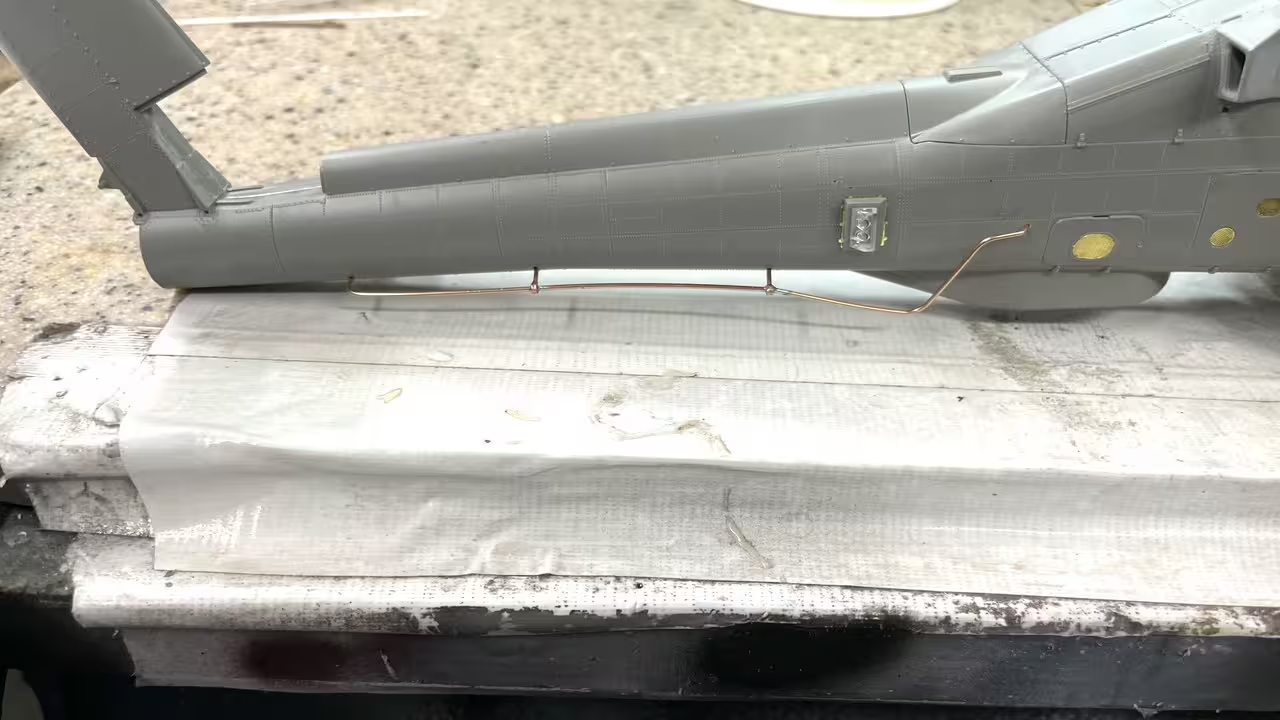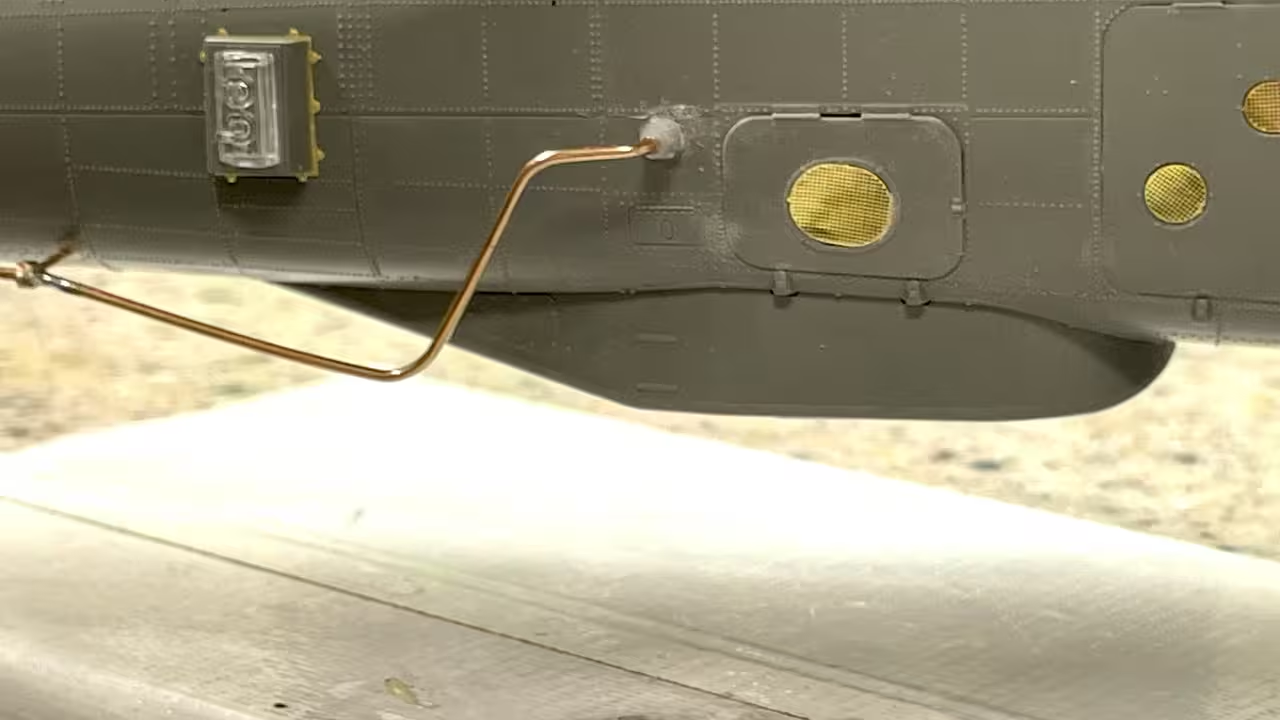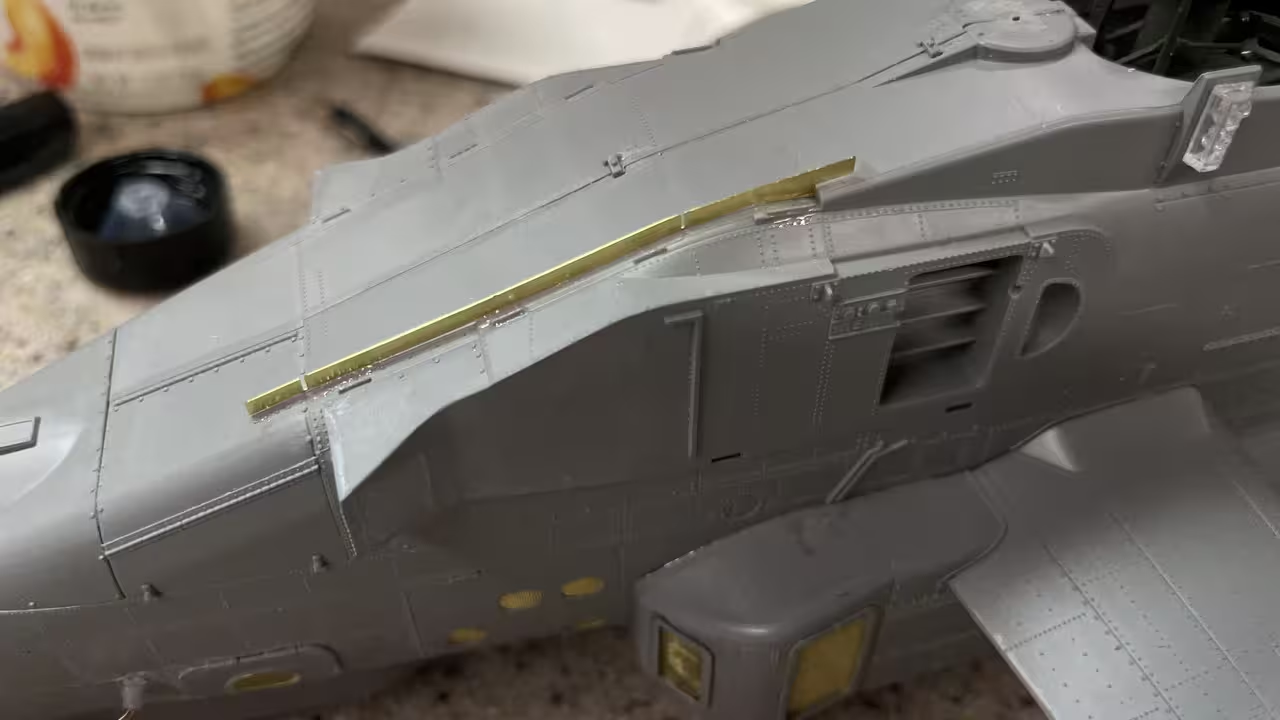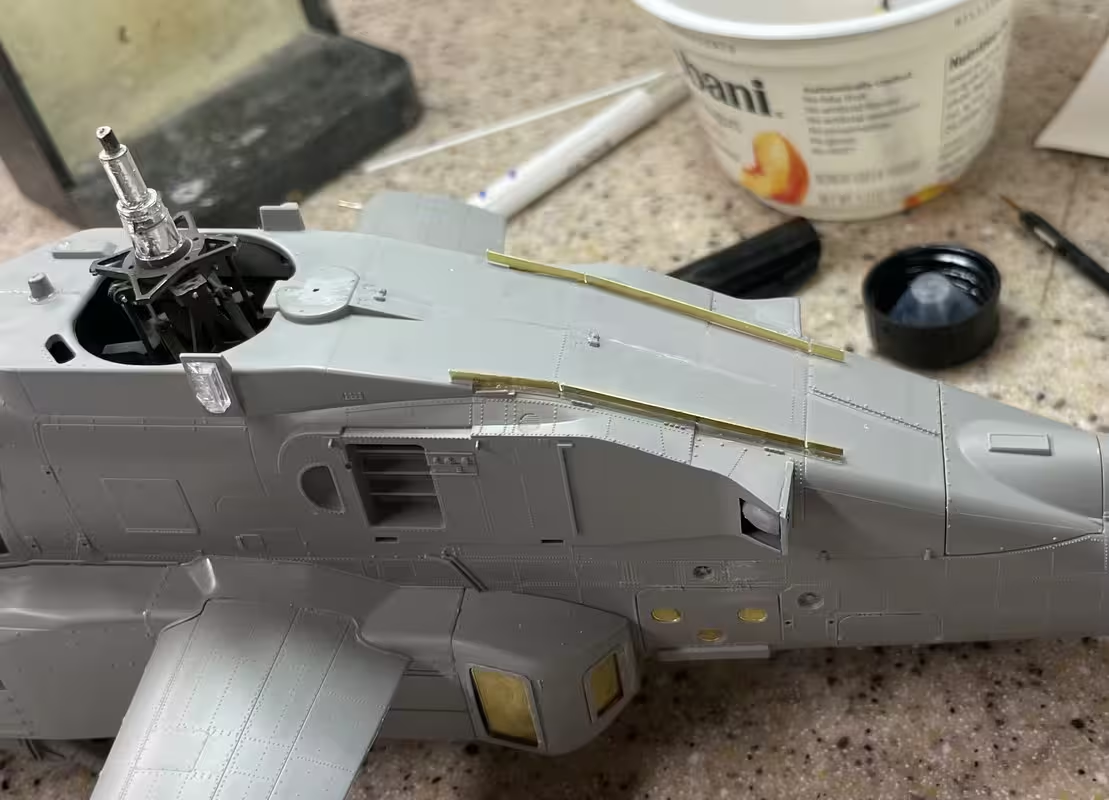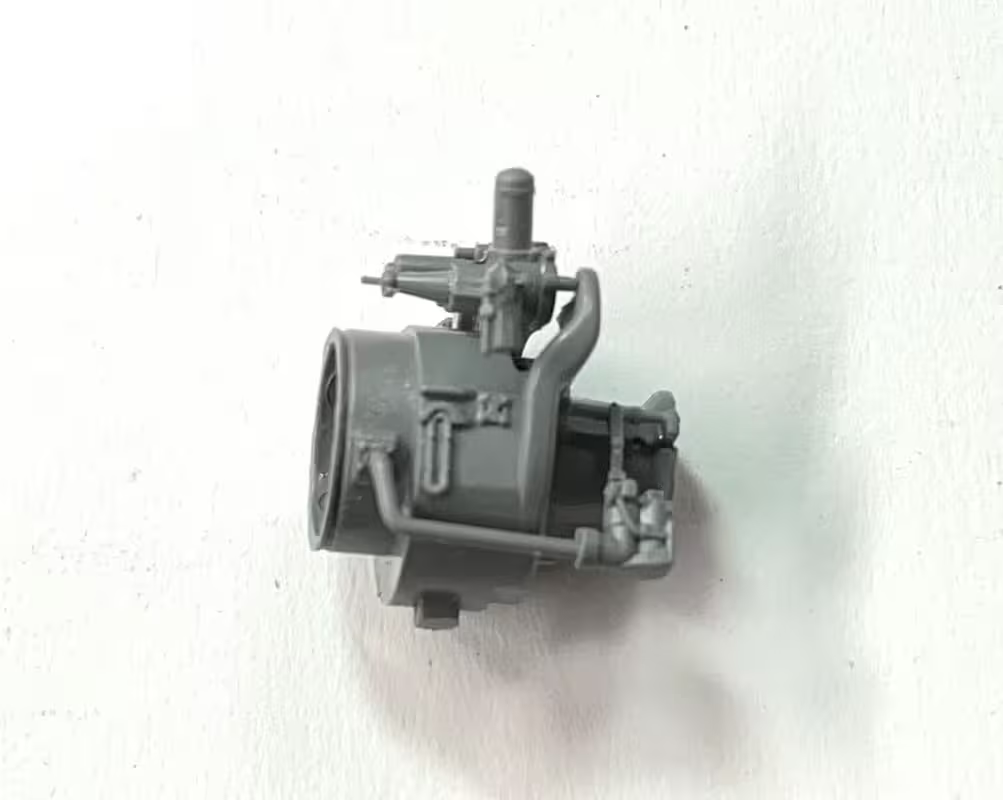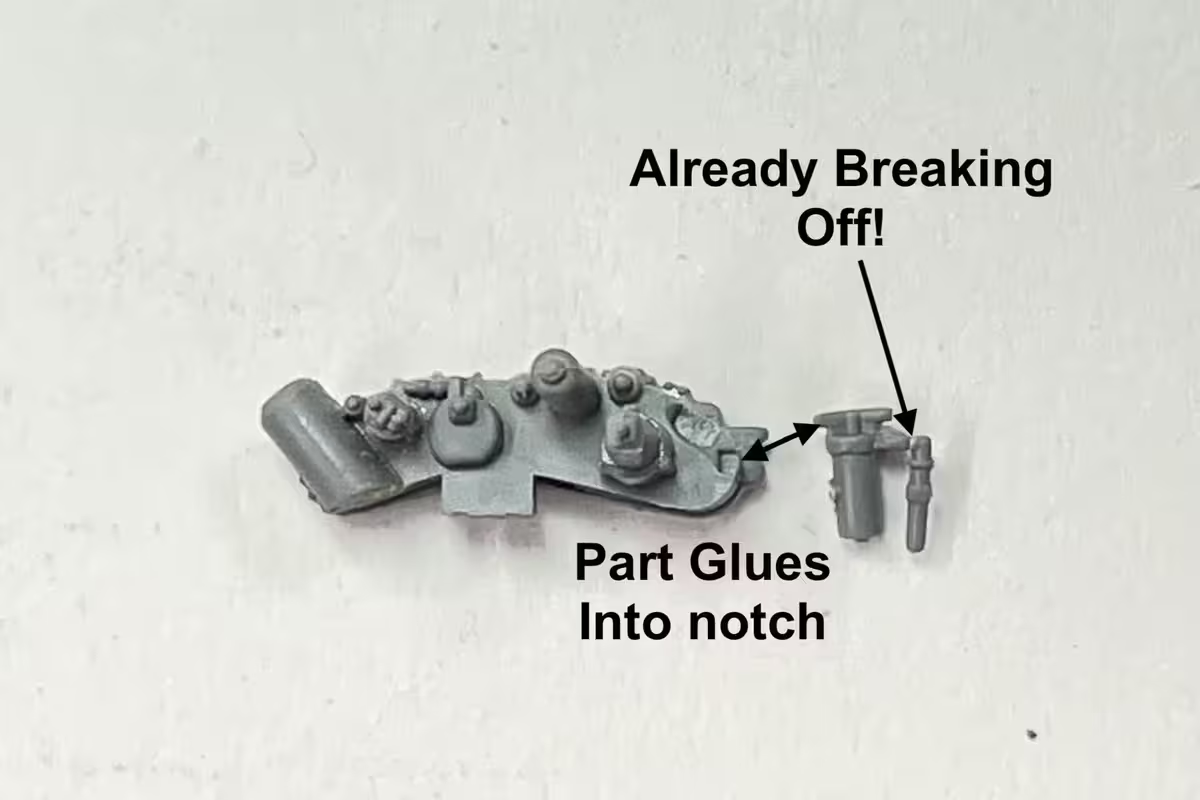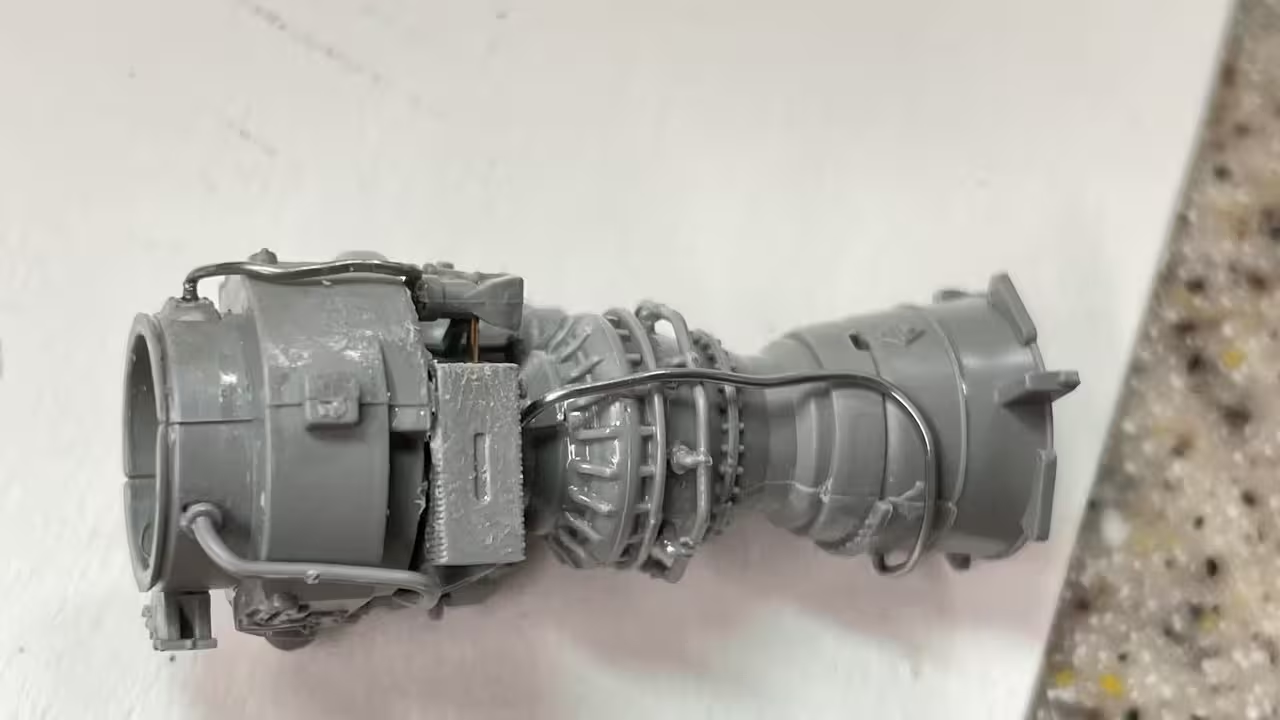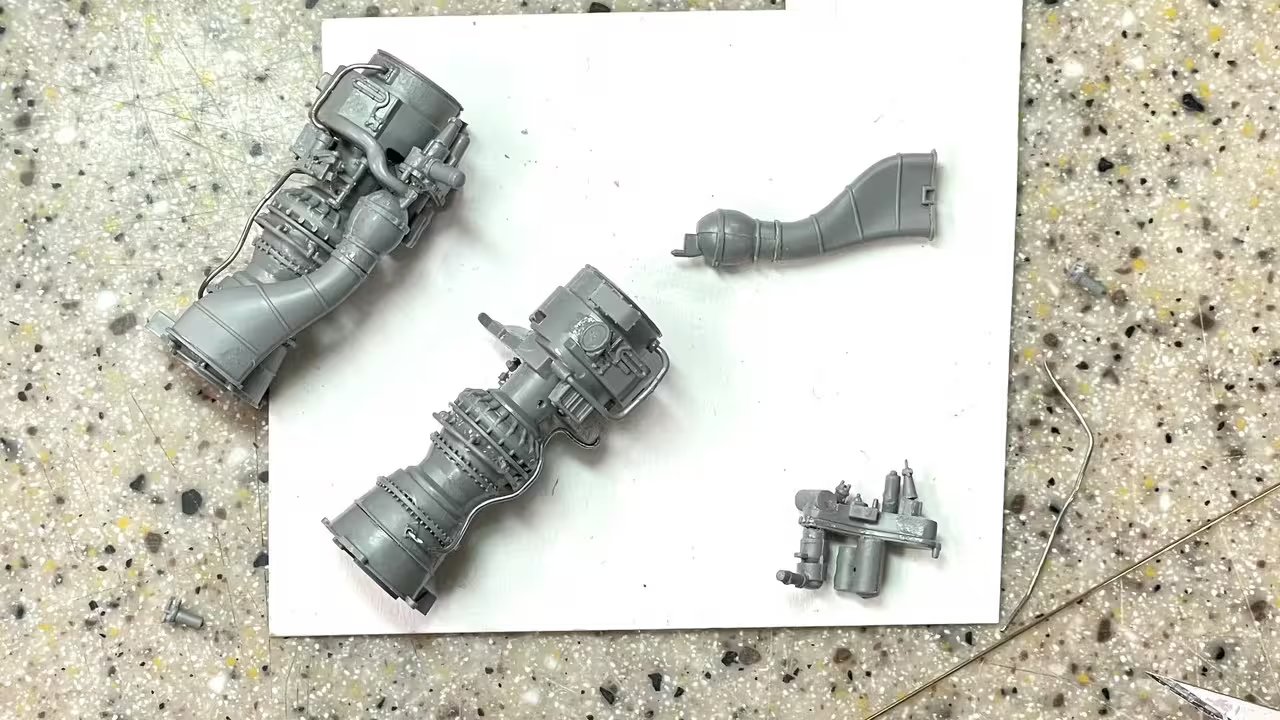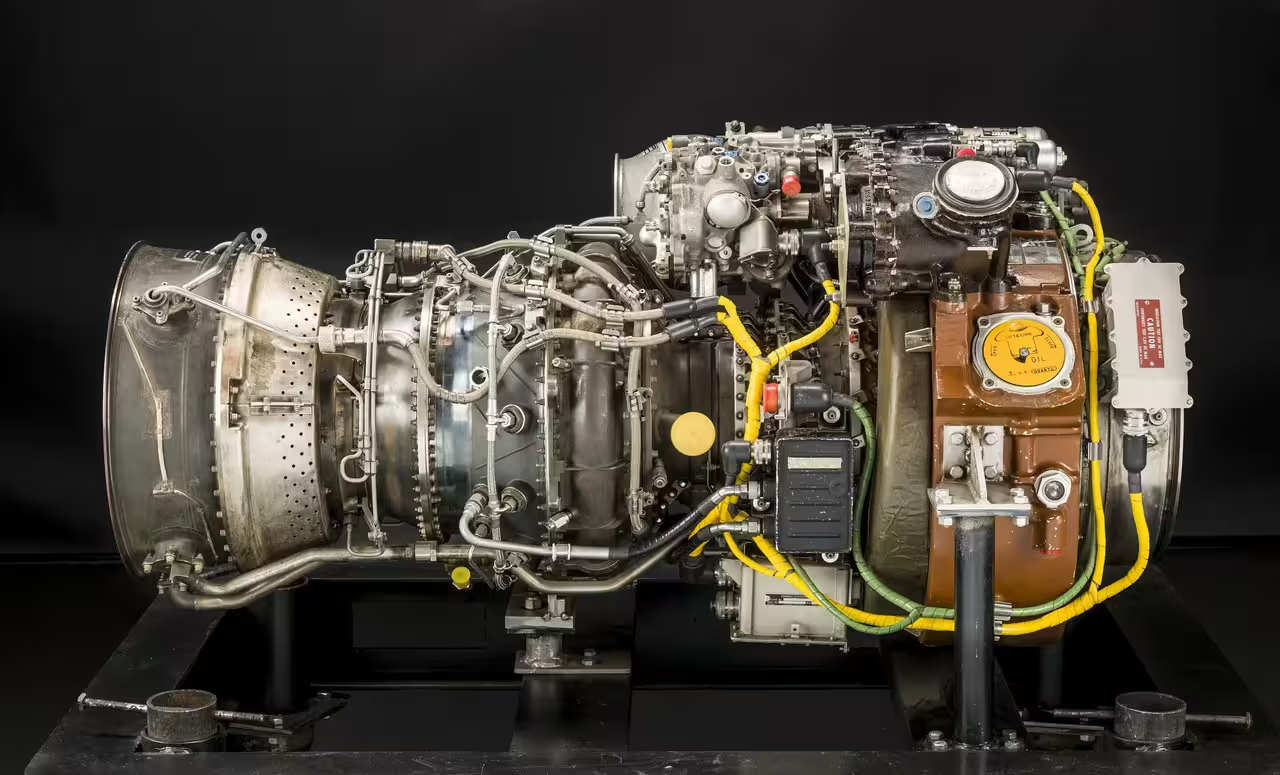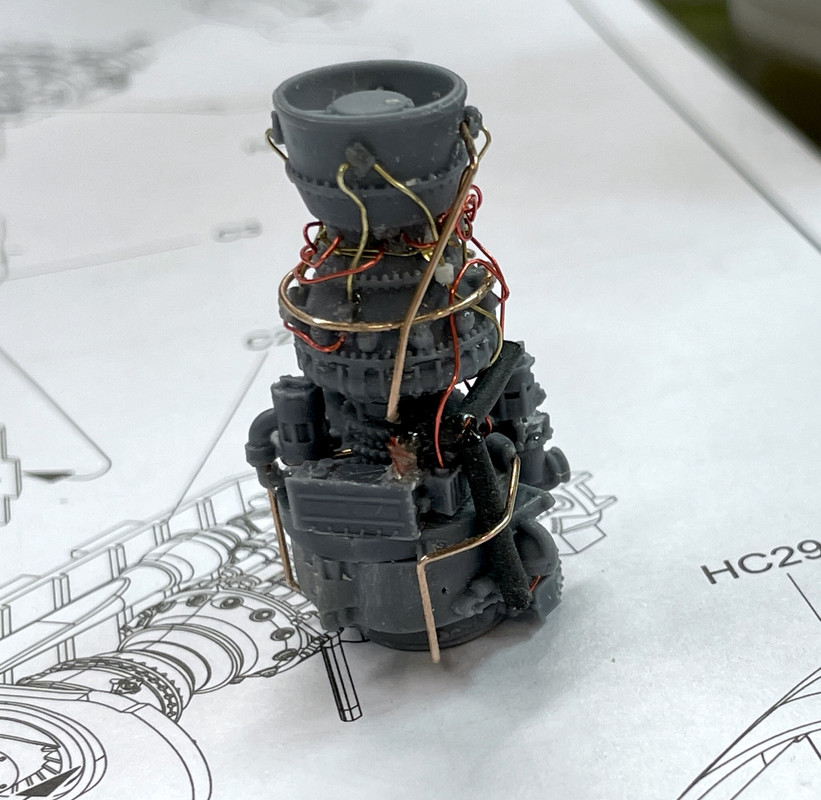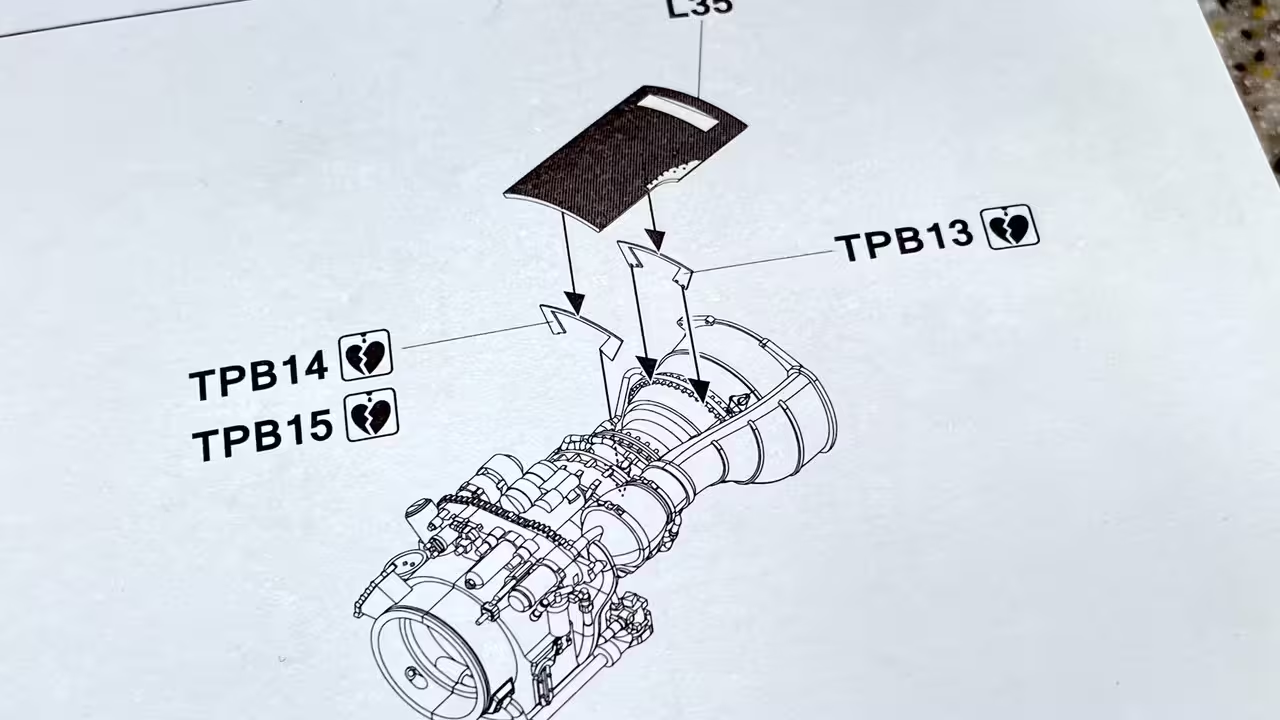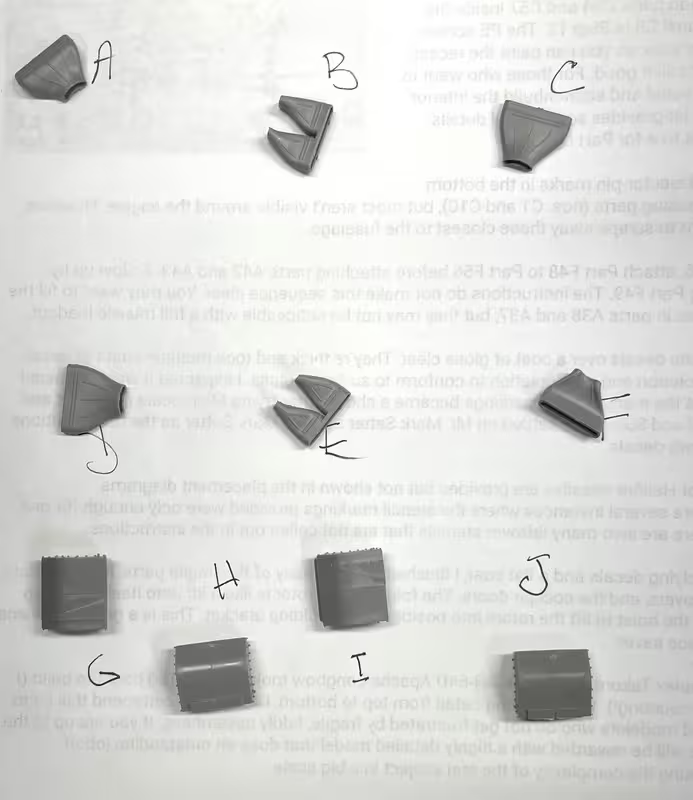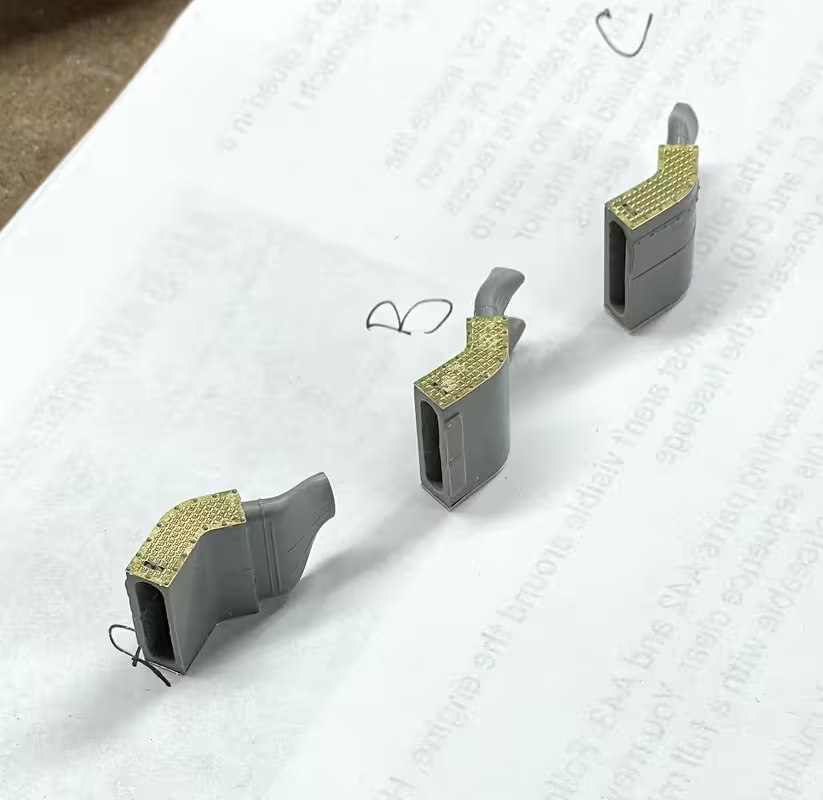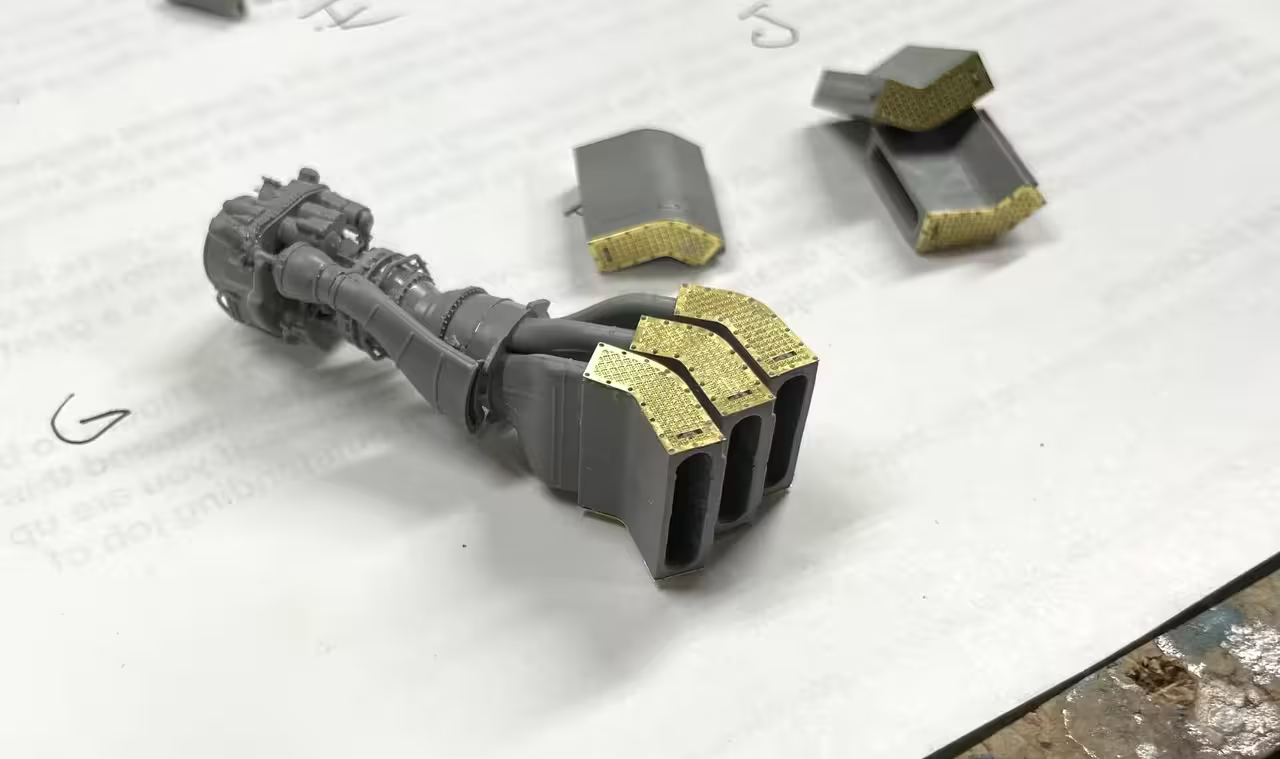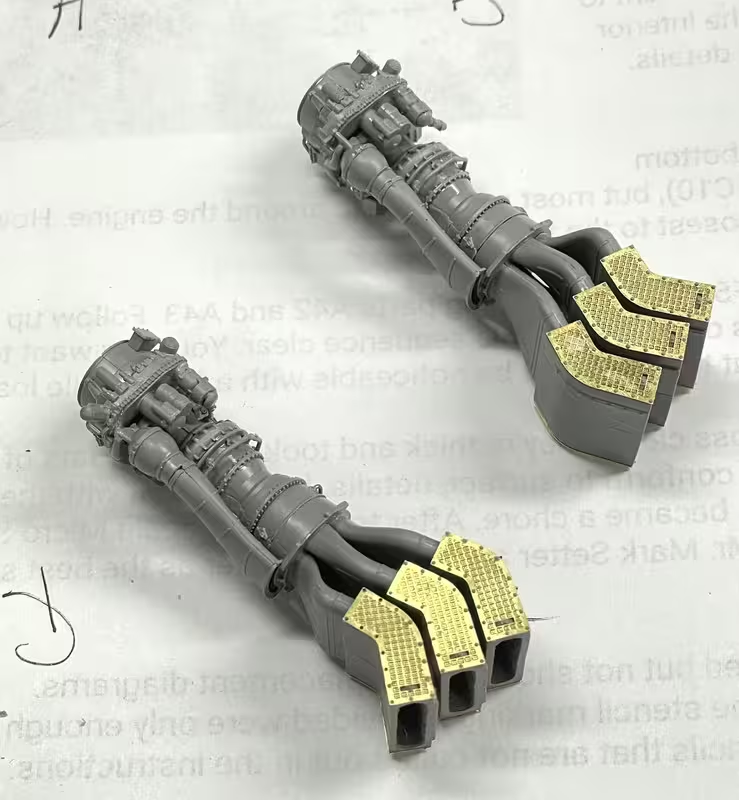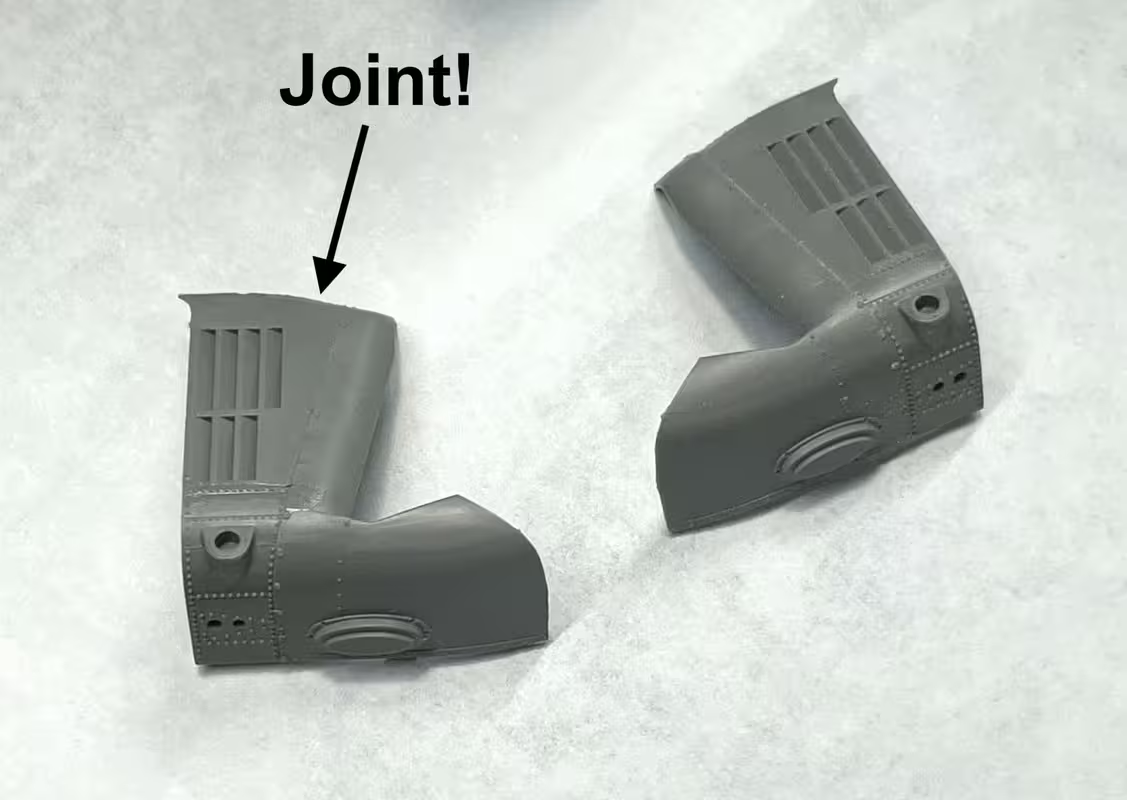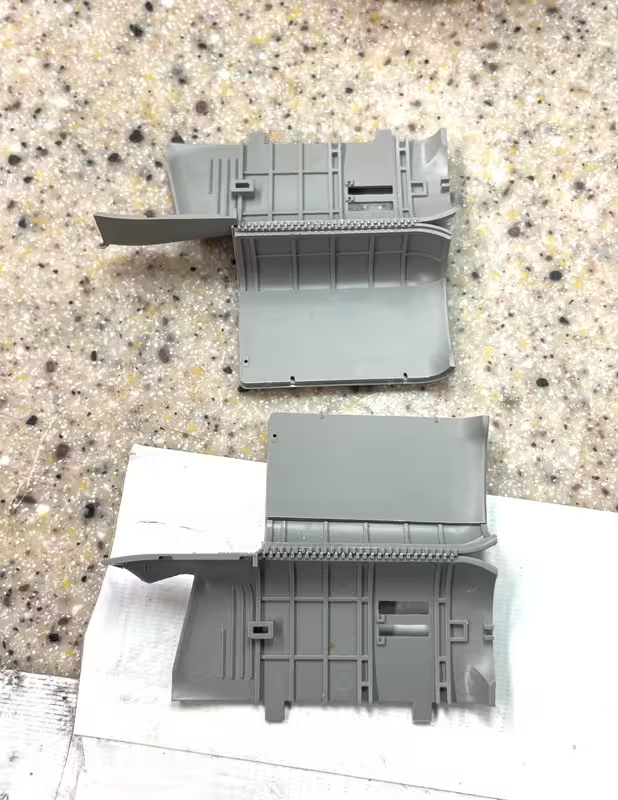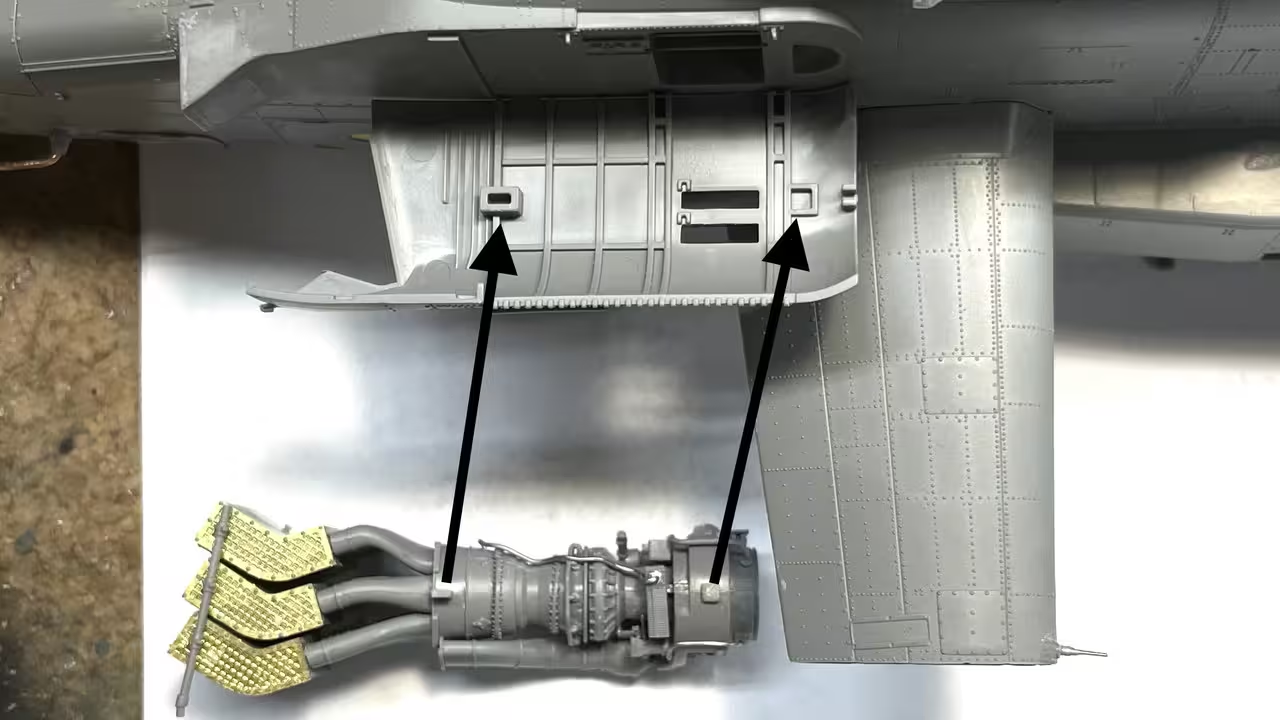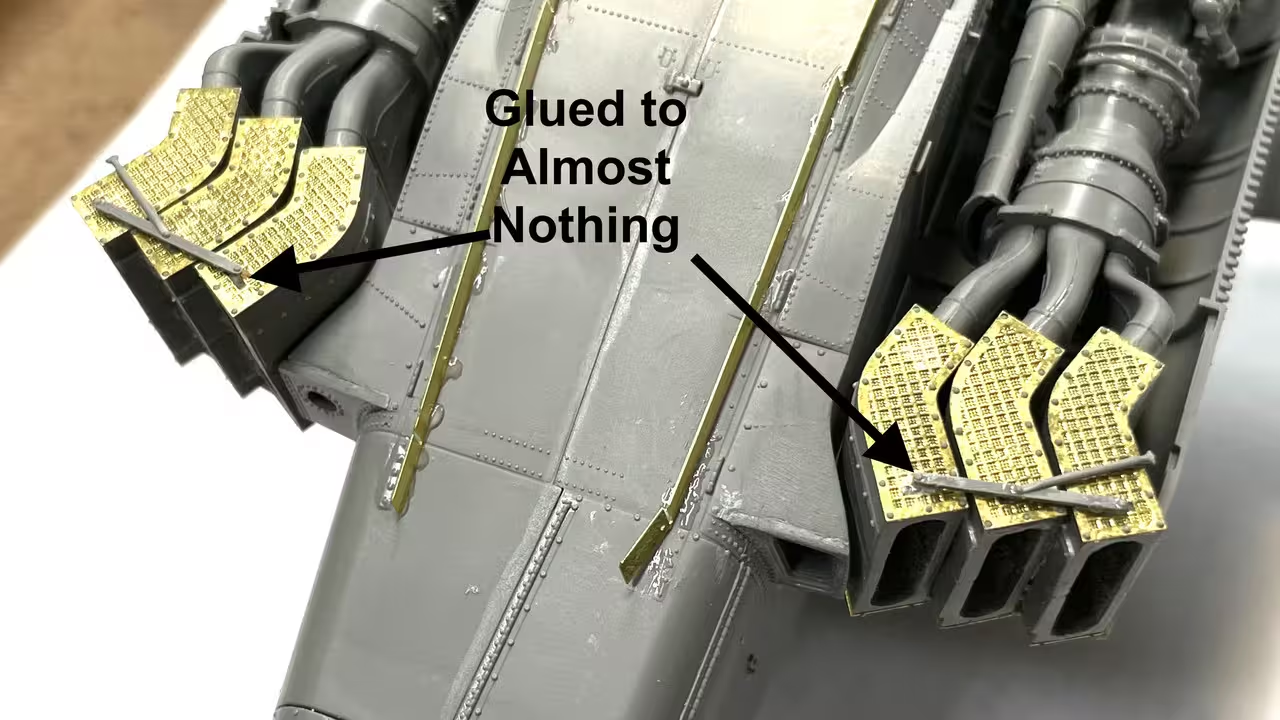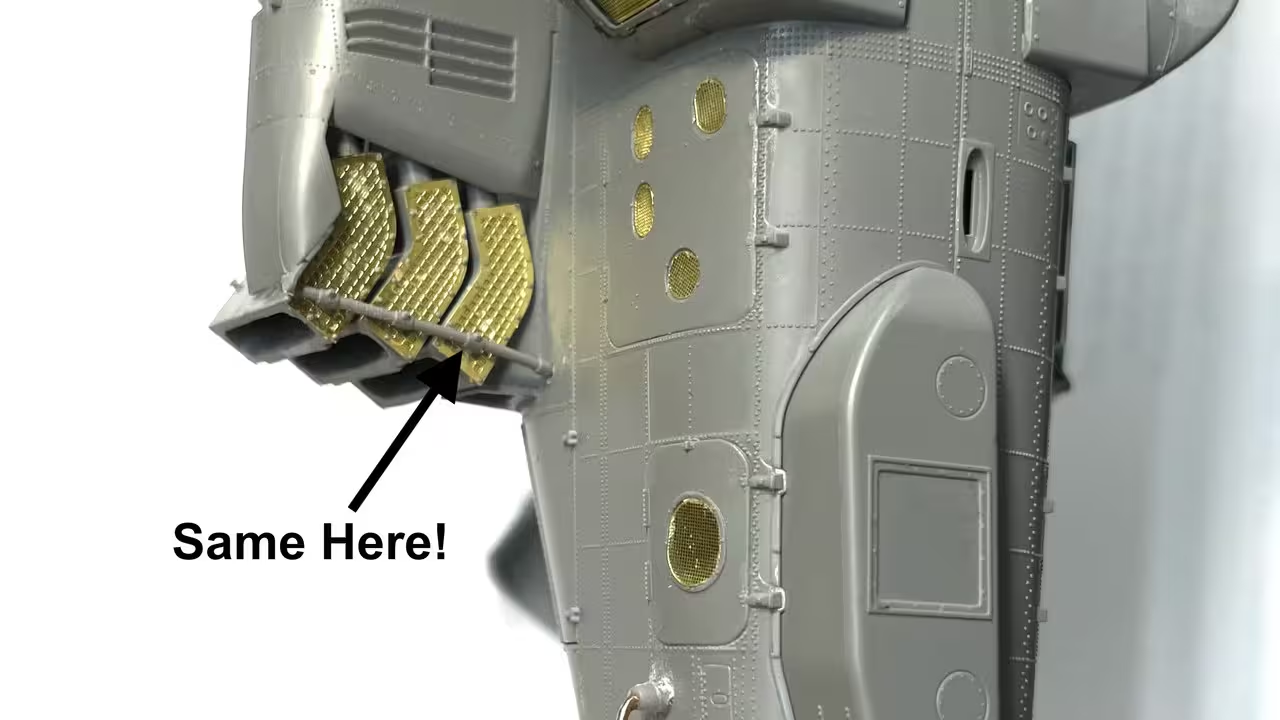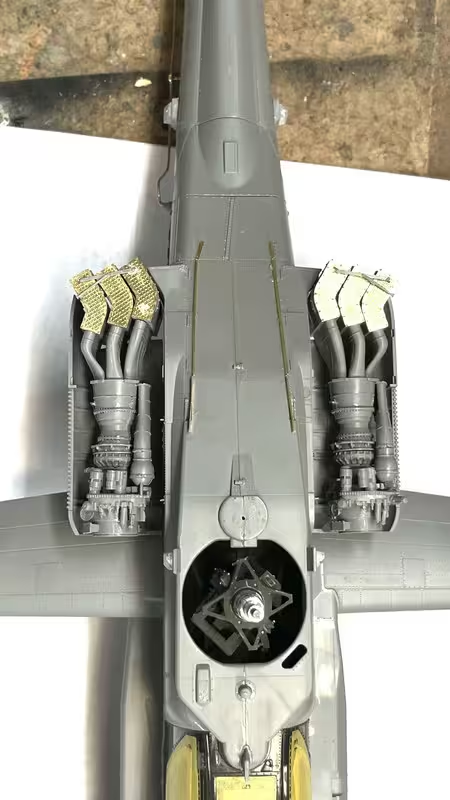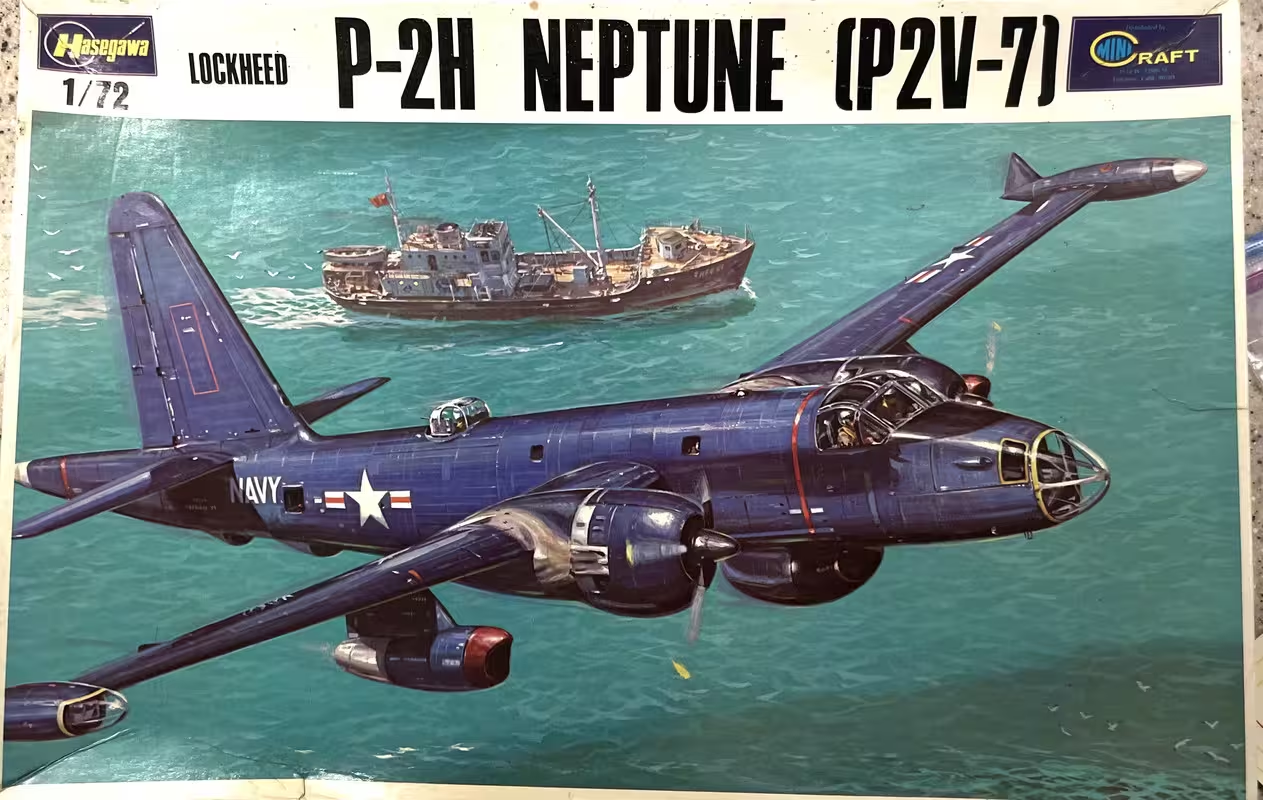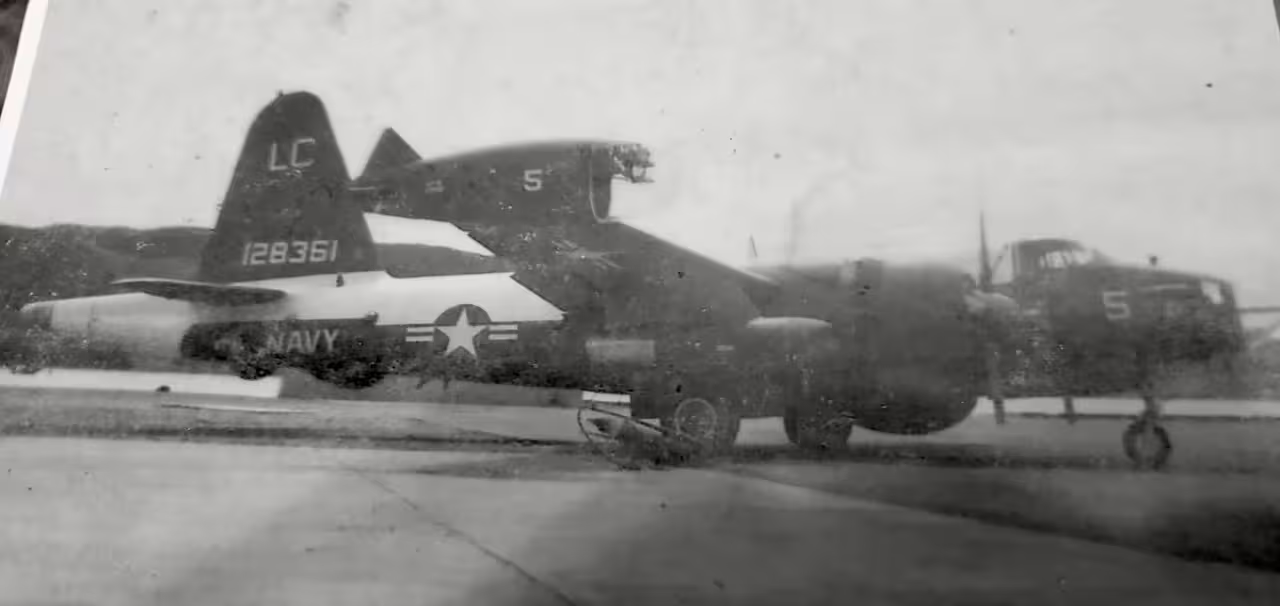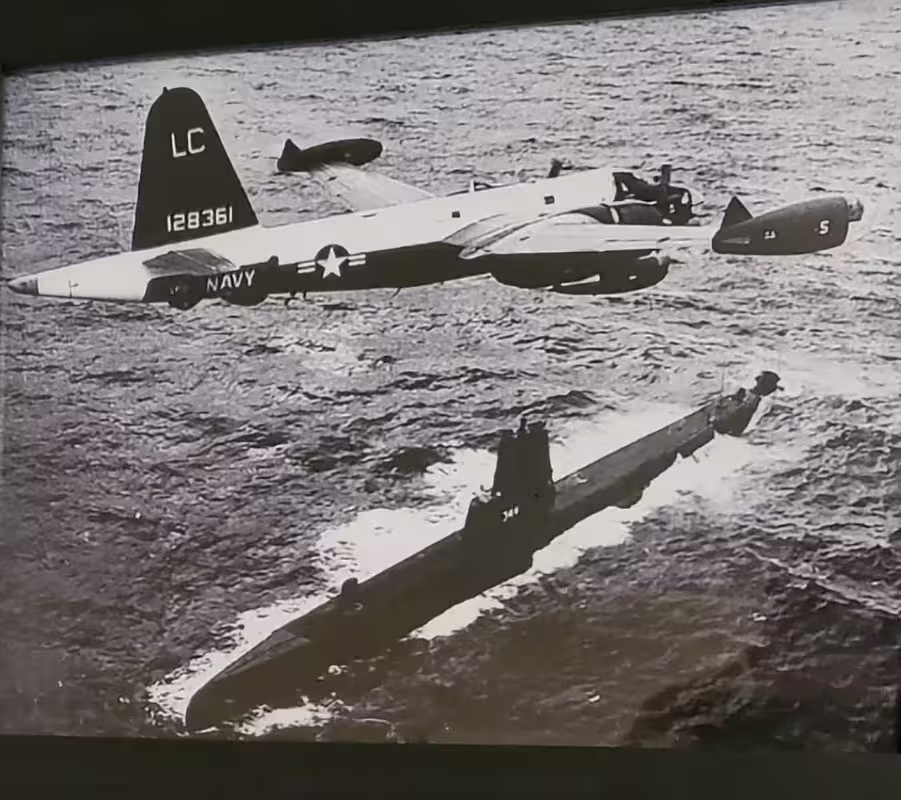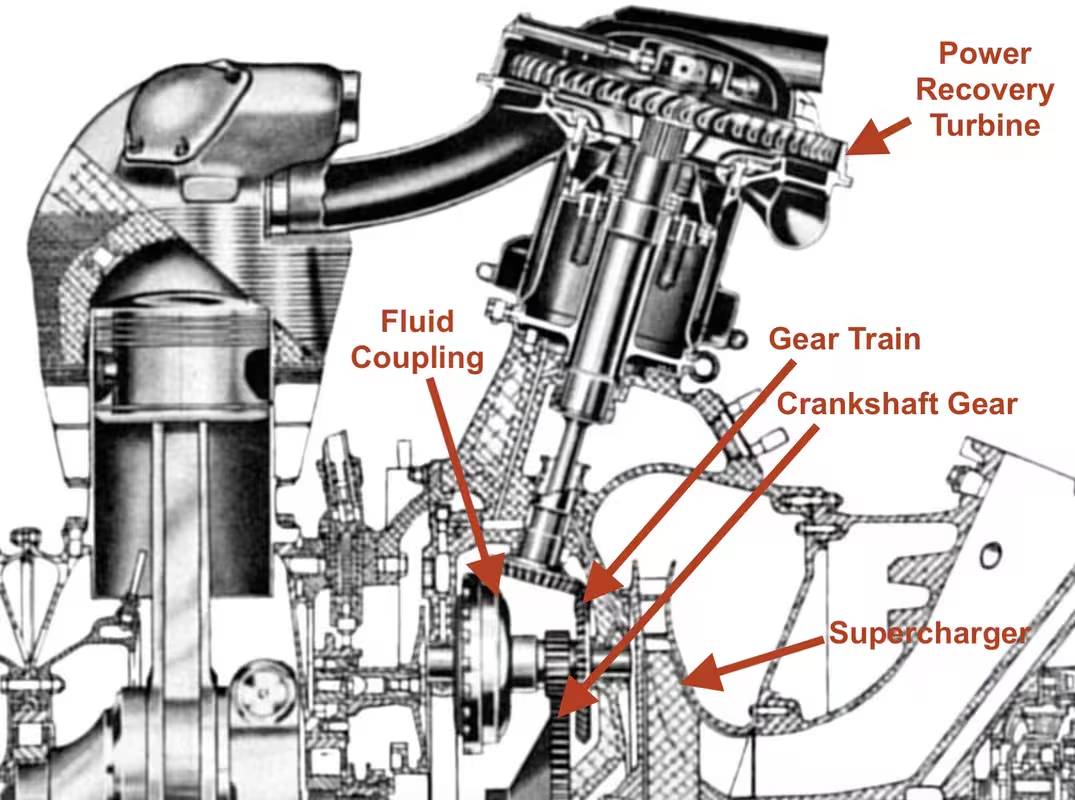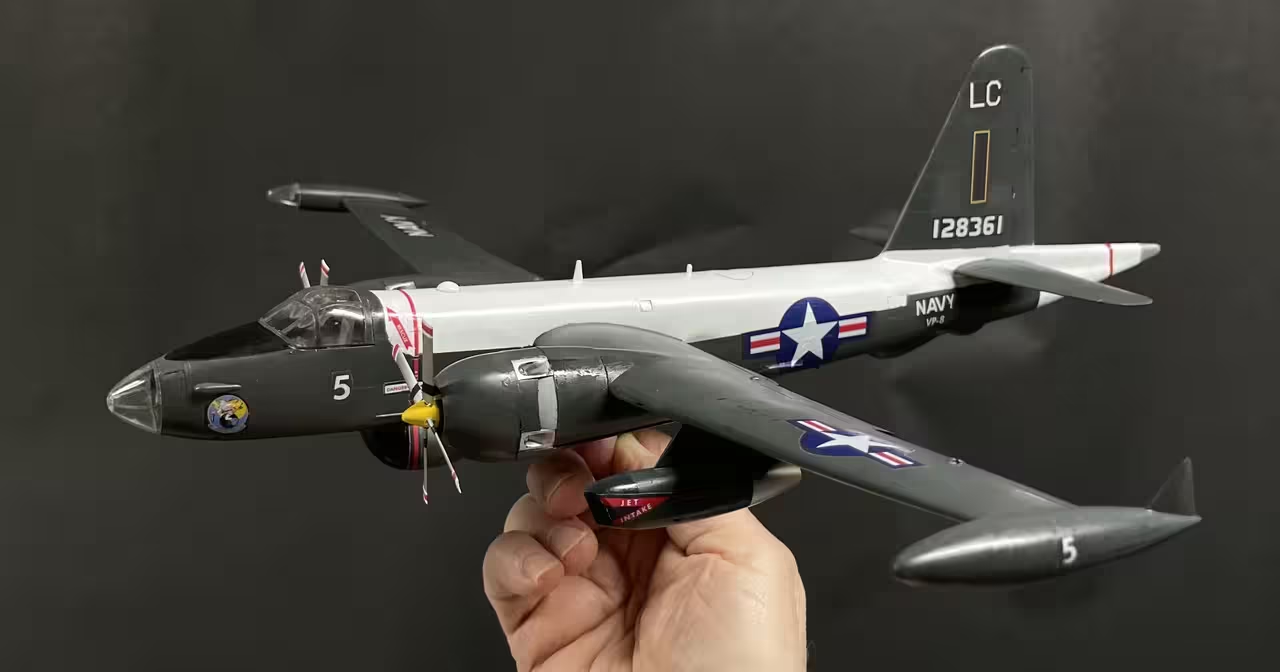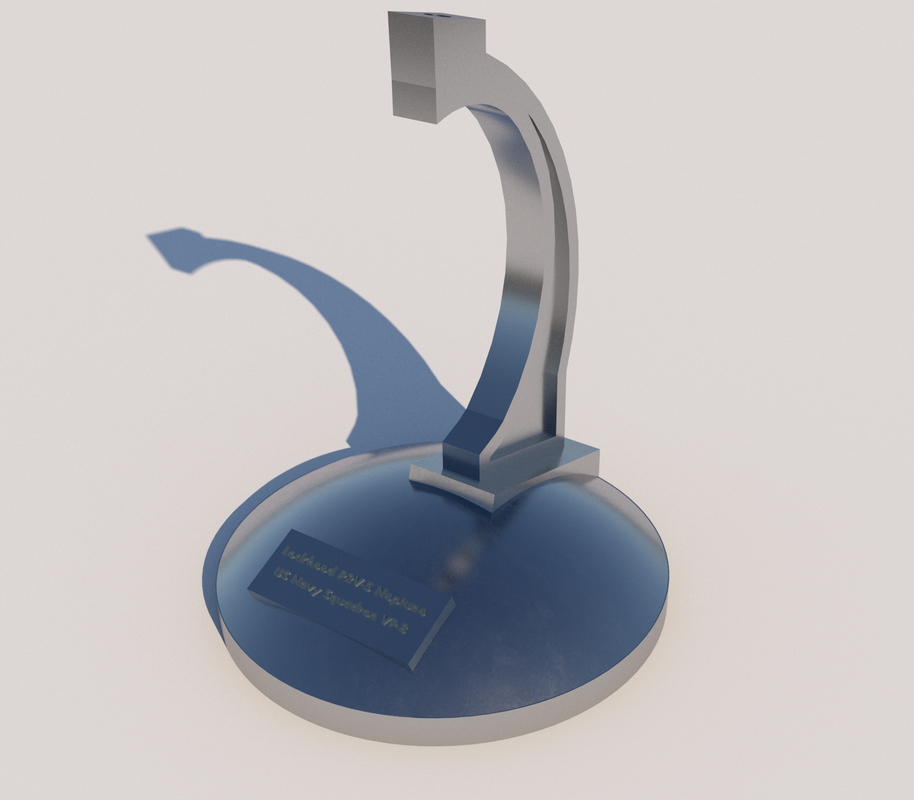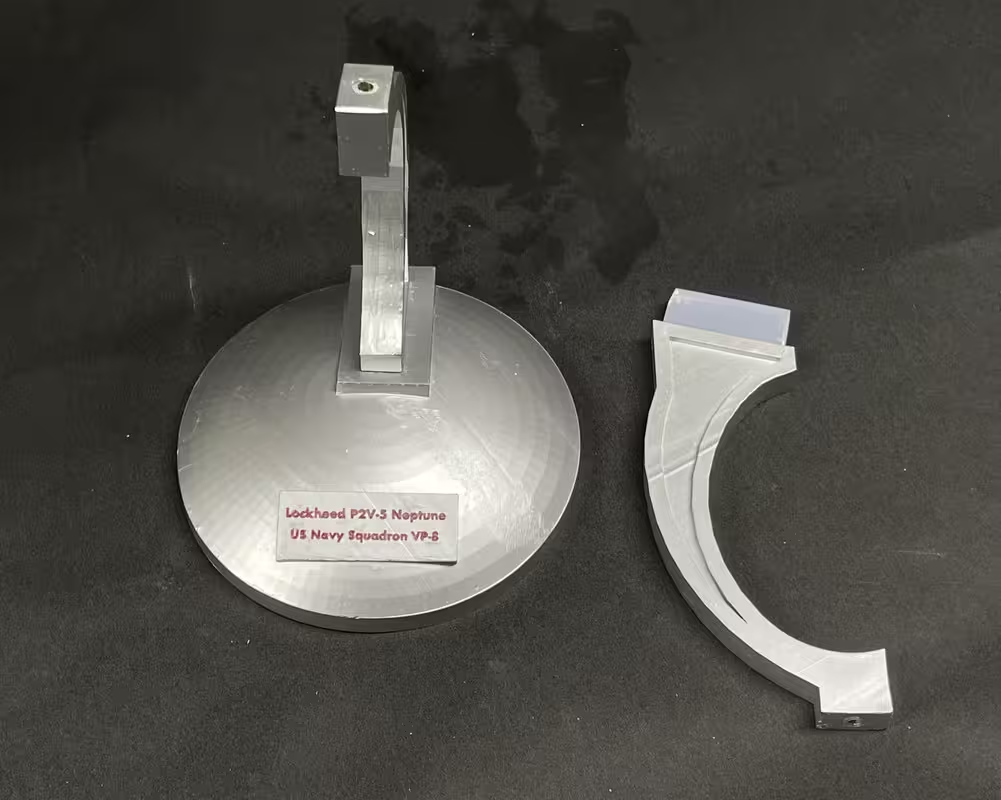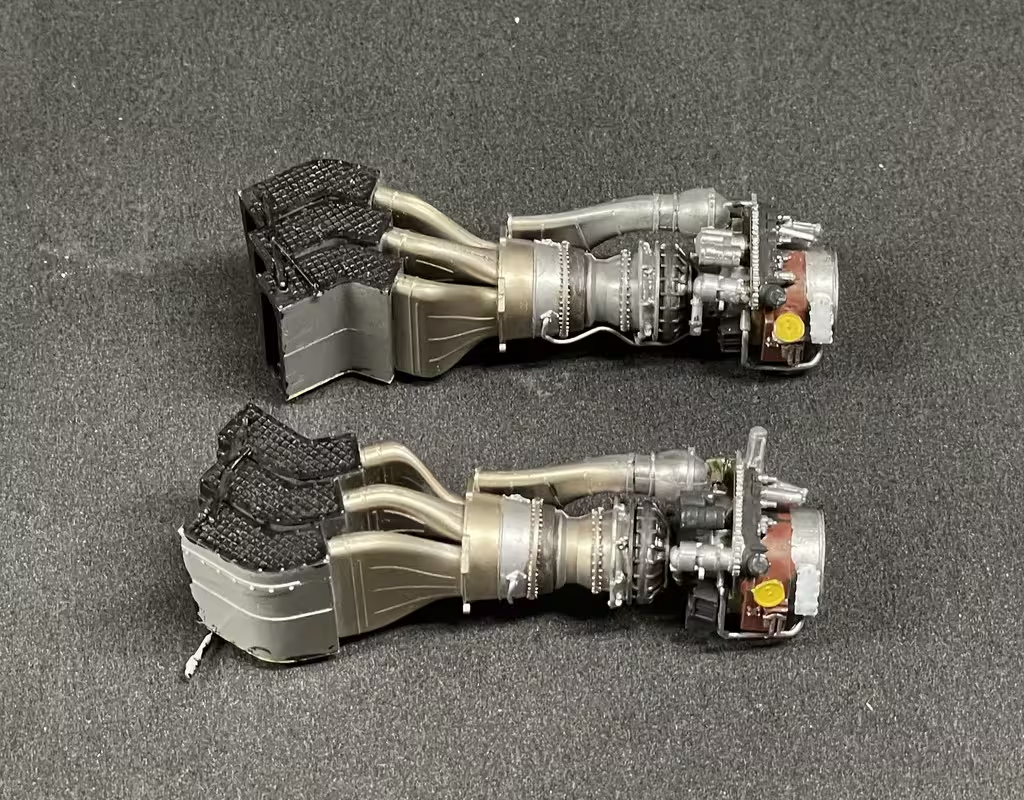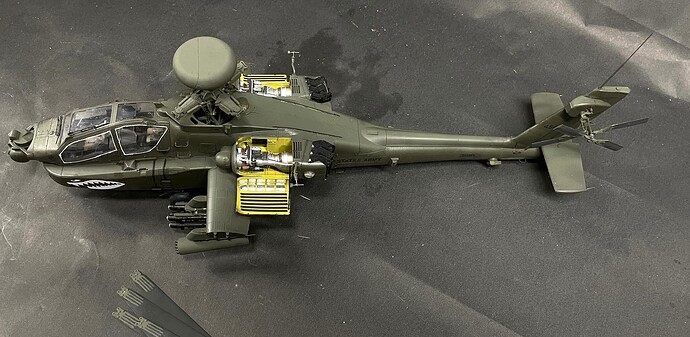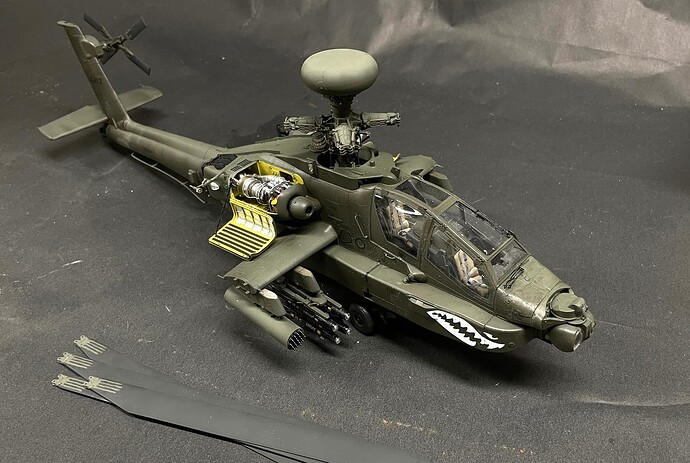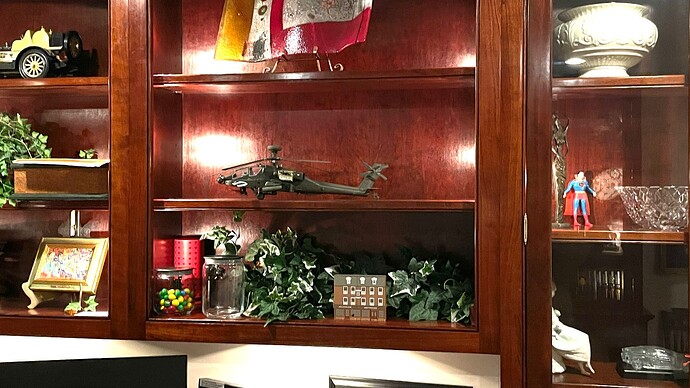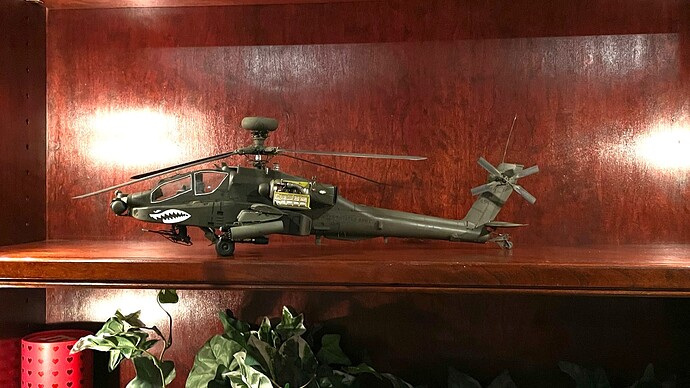Worked today… well… sort of… spent half the time searching for a part. More about that later.
Got some smalll details put on the roof and proceeded to damage the small vertical antenna. So I cut it off and will replace it with music wire later on. The other detail also got whacked, but survived.
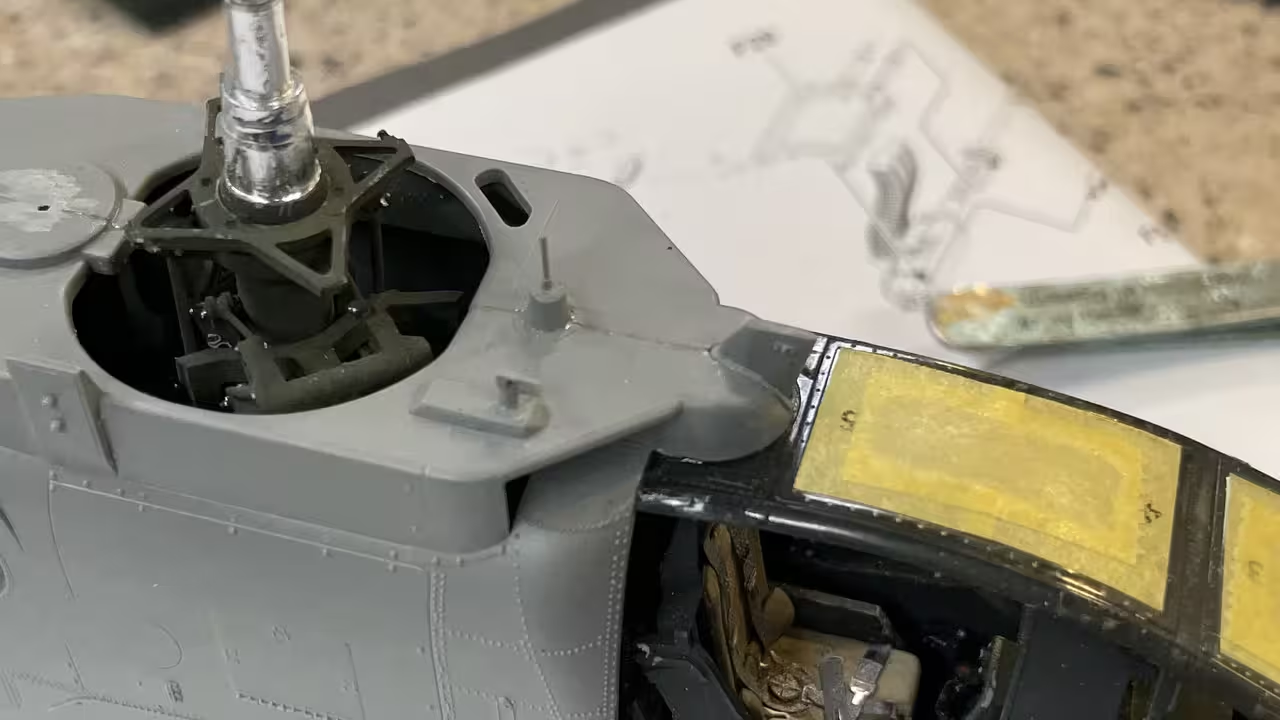
With the top roof’s handles secure, I glued it in with Tamiya liquid. Front and back went in nicely. There part over the mid-tub armor panel was gapped and needed some special attention.
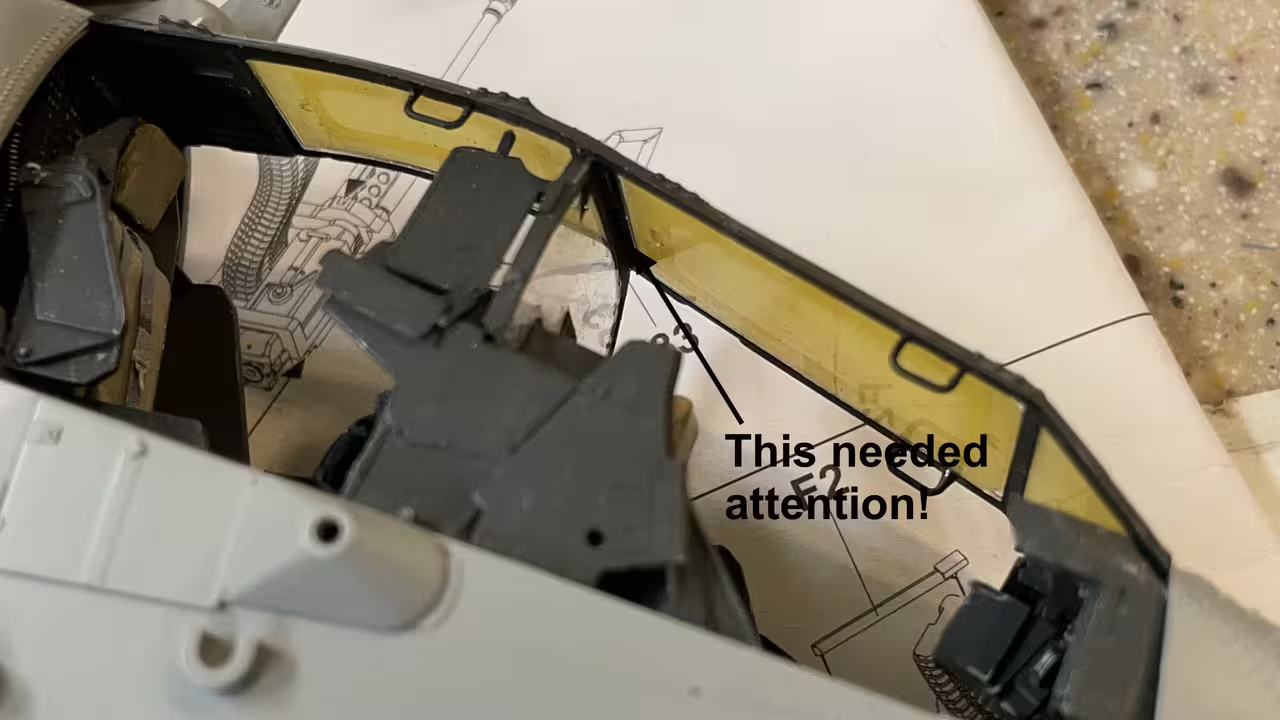
I glued in the pilot side glazing using Testor’s Canopy Cement. I like that stuff since it does hold reasonably well, can clean up easily, doesn’t craze and, G_d forbid, you have to remove the part, you can. Today I did. A couple of pieces of tape held it in place until it cured.
The Strb’d side needed Part P53. It’s specifically shaped filler piece that goes in between the moveable frames and has provision for a hand grab. I cut off one end, and when the other end cut… whoosh! Gone! It took off to the left in an elevated trajectory. I didn’t expect this part to be a flyer. I didn’t hear it land anywhere. I usually try and listen if a part hits anything.
I cleaned and emptied EVERYTHING. I checked my clothing, shoes, etc. I emptied a chaotic box of scrap wood and junk under the workbench (it needed it anyway… badly), swept everywhere, checked every nook and cranny of my other main workbench. This puppy was in the multi-verse.
So I fabbed a filler piece and glued it in. It lacked the surface details of the real thing, but did the job. It wasn’t as easily as it looked since the slot was not uniform width all the way down.

There was also some gapping at the top of the front glazing and I filled this with styrene to be trimmed later.

I started working on the two sponsons. I’m not opening the equipment bays. My friend is not a critical model observer and I don’t want to spend the many hours to detail these areas if they’re not appreciated. Furthermore, I have some big stuff in the queue and want this model done by the end of July when I deliver the turret model to the New Jersey.
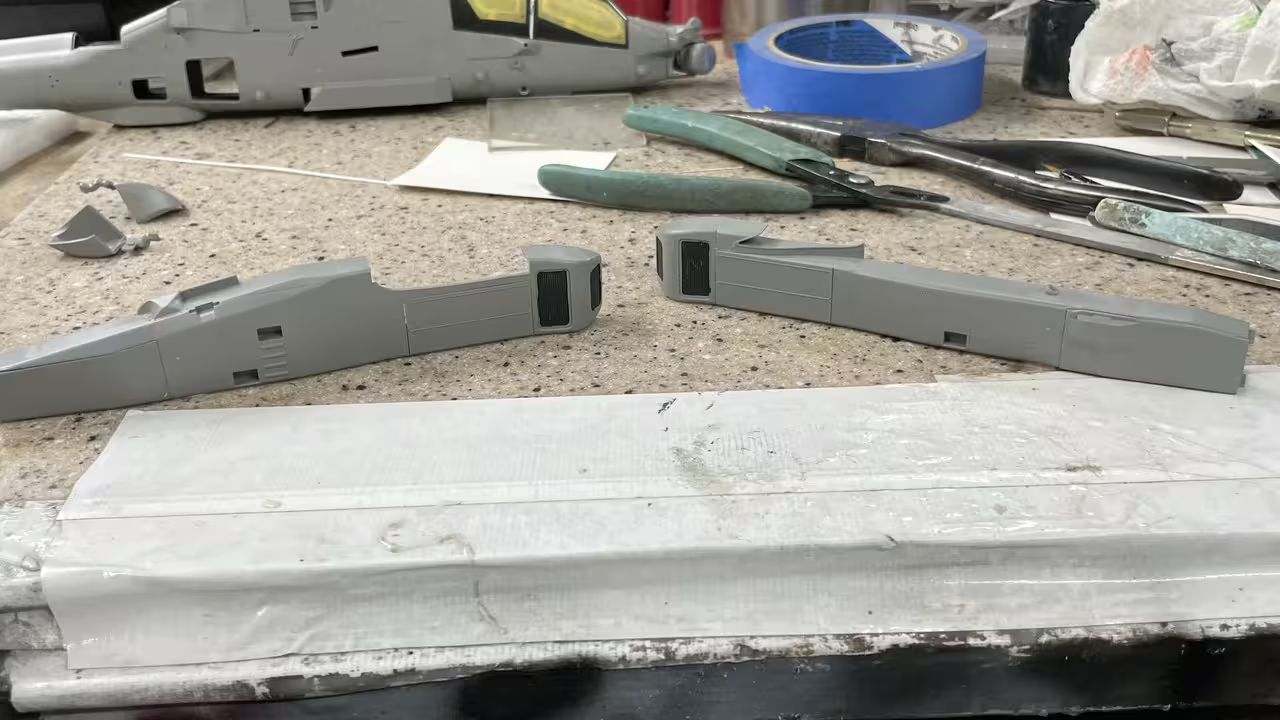
It was quitting time (5:00) and when changing out of my shop shirt, I reached in the pocket and guess what I found? P53! I swear I checked that pocket early on in the search. Absolutely drove me nuts!
Brings up being able to rip out work when glued with canopy cement. I removed both glazing pieces and will install the correct part tomorrow.
